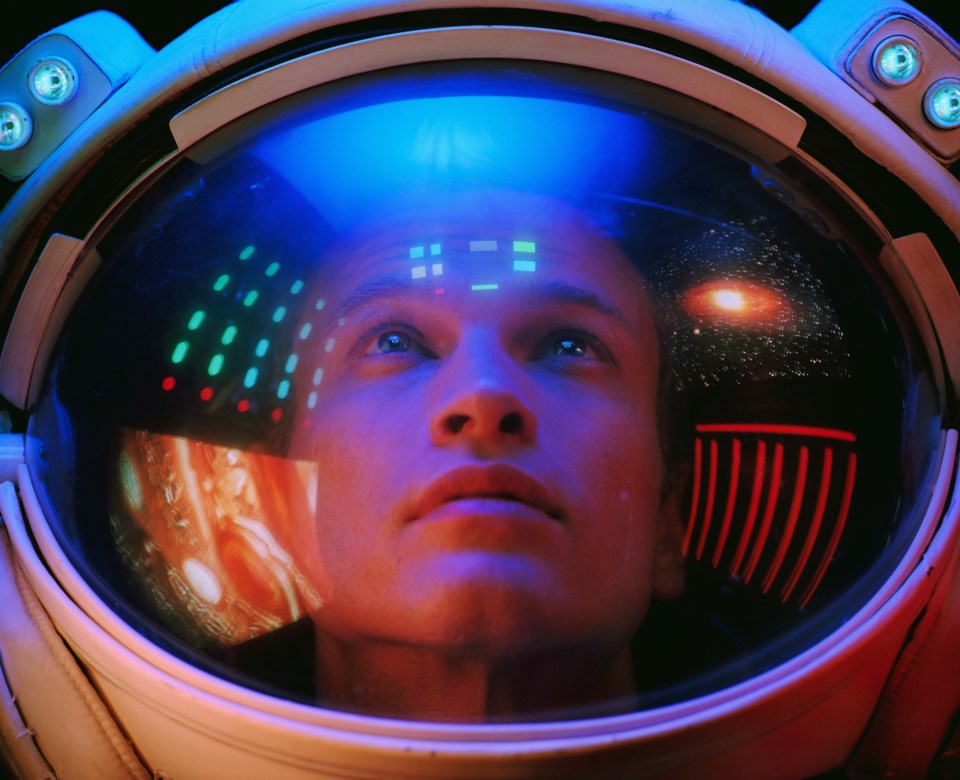On July 30, 2020, the National Aeronautics and Space Administration—better known as NASA—launched its latest vehicle into space. The Perseverance rover is on its way to Mars, where it will land in February 2021 to search for signs of ancient life and collect rock and soil samples for future study.
The Perseverance rover is NASA's most recent excursion into the cosmos. Since Oct. 1, 1958, this American institution has contributed much to the dense knowledge of astronomy and space science. Whether it’s through direct space exploration with drones or manned spaceflights, astute observations through a telescope, or satellite images of our world and solar system, NASA pushes the boundaries of aeronautics, aerospace research, and continues to make new inroads with civilian space exploration.
Topics of space and space exploration have always fascinated people. Constellations allowed early sailors to chart their way across oceans and explorers to find their way across giant, unexplored landmasses. The mysteries of space, the heavens, and the expansiveness of our world have inspired religions, literature, and pushed the boundaries of where people believe they fit in the universe. With the advent of rockets and other technologies in the 20th century, public interest in what might be out there beyond our own planet and solar system has only grown.
To celebrate the launch of the Perseverance rover, Stacker compiled a list of real “Jeopardy!” clues about space. The show often acts as a gauge for public interest and curiosity, and its clues have been meticulously catalogued at the J! Archive, where every show is listed up through early 2020. For this gallery, we’ve expressed each clue along with the “Jeopardy!” category in which it was found, the monetary value of the clue, and the date in which it aired on television. The following slide will then reveal the answer in the form of a question (of course), along with some additional information and trivia about the subject in question.
Keep reading to test your knowledge of space and the history of NASA.
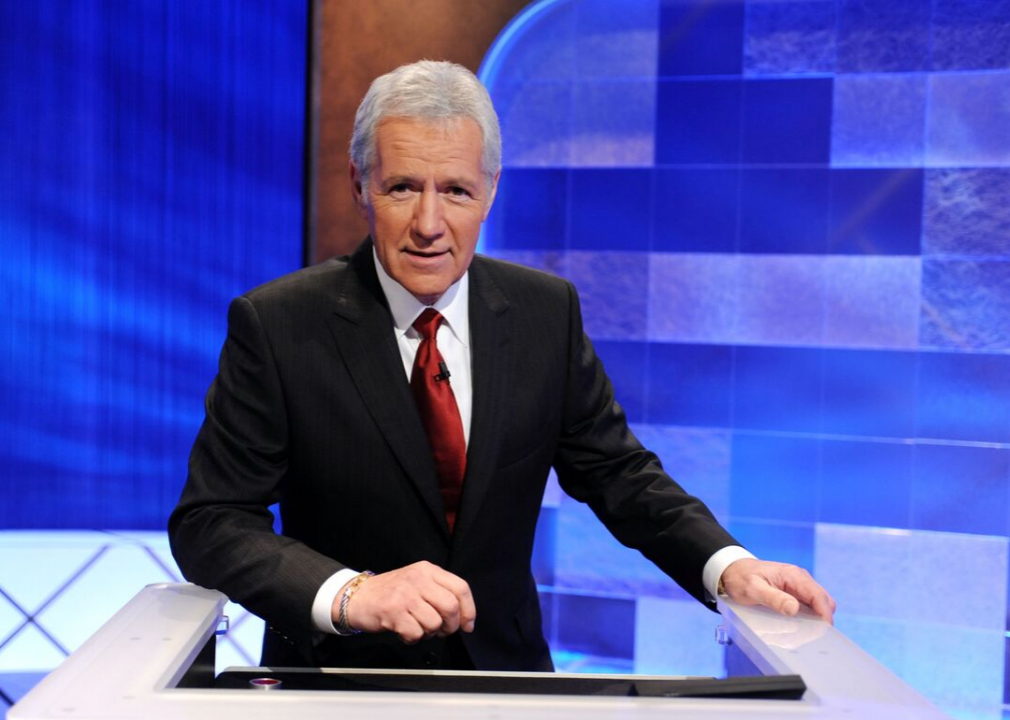
Amanda Edwards // Getty Image
Clue #1
- Clue: A probe designed to study Halley's Comet was one of the many casualties of this 1986 space program disaster.
- Category: HALLEY'S COMET IN HISTORY
- Value: $800
- Date episode aired: Sept. 17, 2019
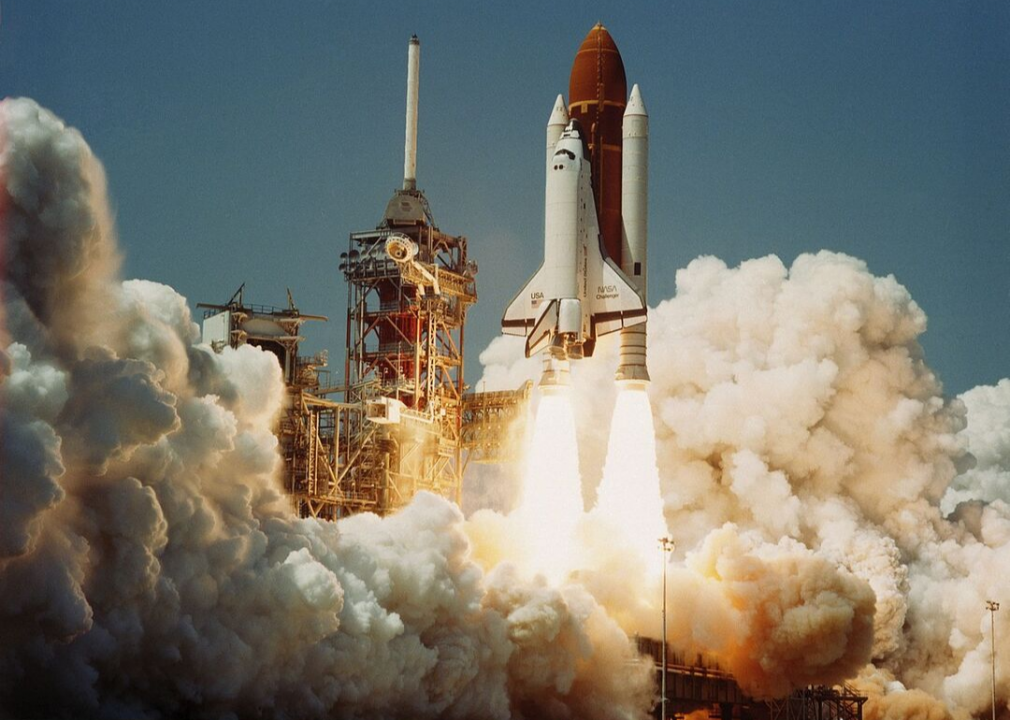
Unknown // Wikimedia Commons
Answer #1: What is the Challenger disaster?
Due to failure from O-ring seals, the Space Shuttle Challenger broke apart approximately 73 seconds after liftoff. Five NASA astronauts, a payload specialist, and Christa McAuliffe, a civilian who would have been the first teacher in space, were killed as a result of the disaster. The incident has since been used as a cautionary tale for engineering safety.
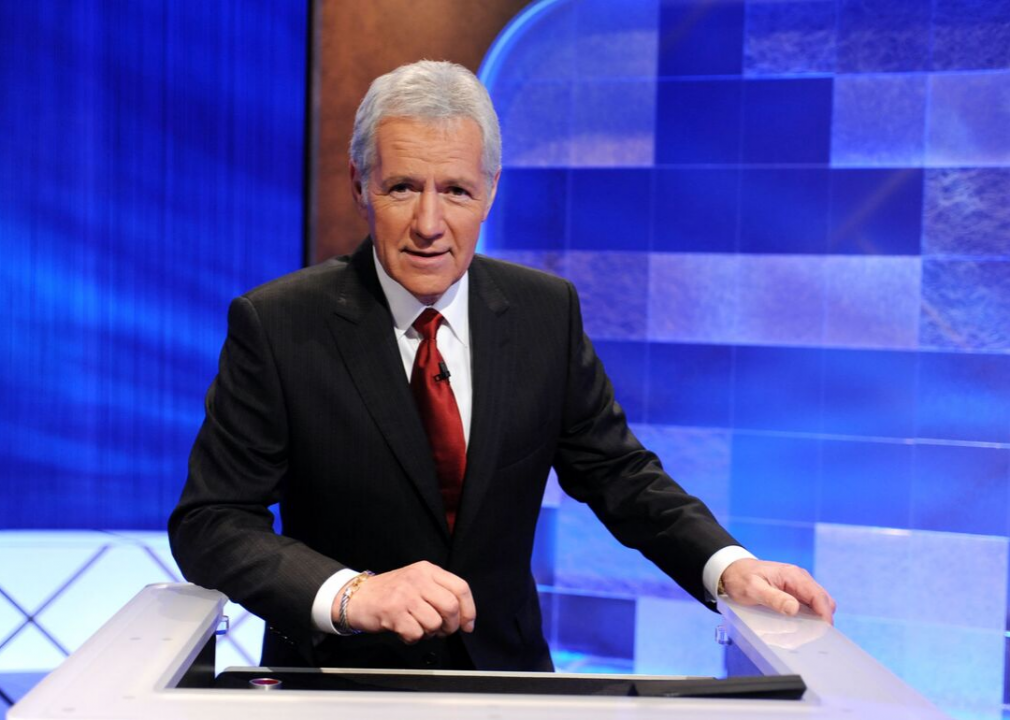
Amanda Edwards // Getty Image
Clue #2
- Clue: The Space Center in Houston is named for this president, who was an early advocate of manned space flight.
- Category: HAIL TO THE CHIEF
- Value: $400
- Date episode aired: Feb. 2, 2016
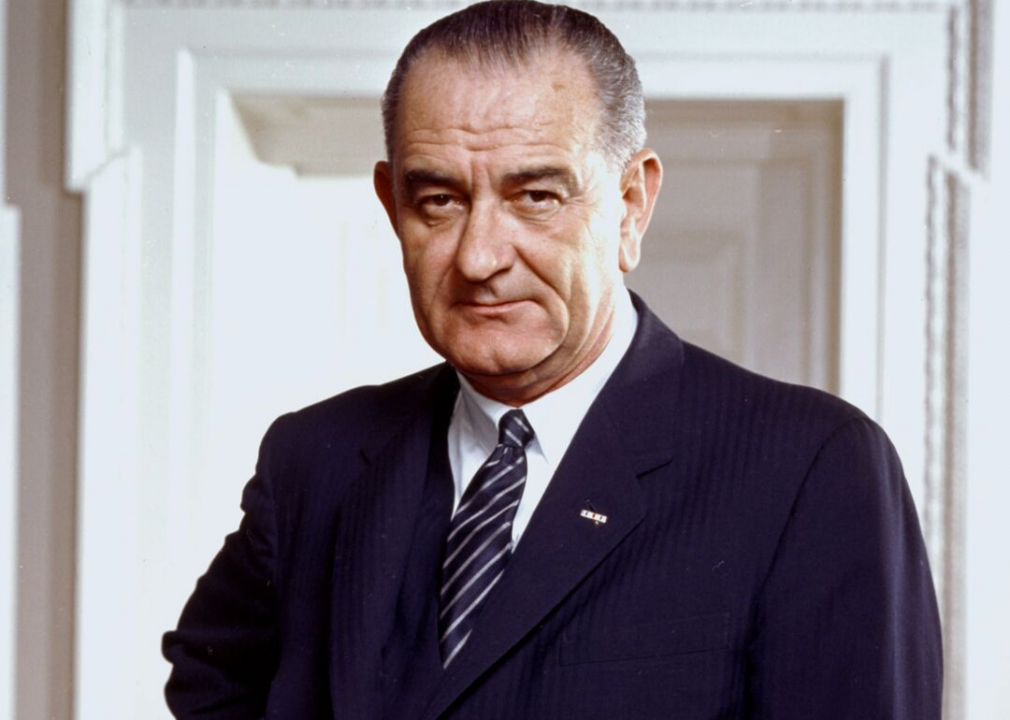
Arnold Newman, White House Press Office // Wikimedia Commons
Answer #2: Who is Johnson (LBJ)?
President Lyndon B. Johnson continued the expansion of the United States space program begat by his predecessor, John F. Kennedy. The Senate named the Lyndon B. Johnson Space Center in Houston (originally named the Manned Spacecraft Center) after the former president, a Texas native. The Johnson Space Center is utilized for training NASA astronauts.
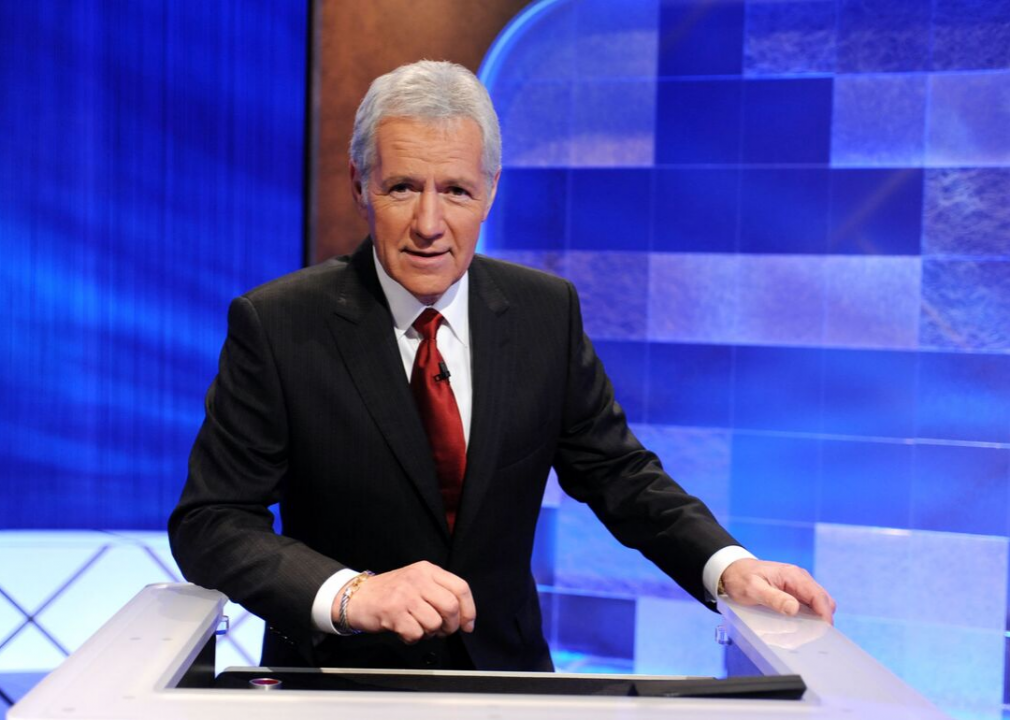
Amanda Edwards // Getty Image
Clue #3
- Clue: Alan Shepard's many accolades included a Medal of Honor for space and a Langley medal from this institution.
- Category: THE MERCURY ASTRONAUTS
- Value: $1,200
- Date episode aired: March 20, 2014
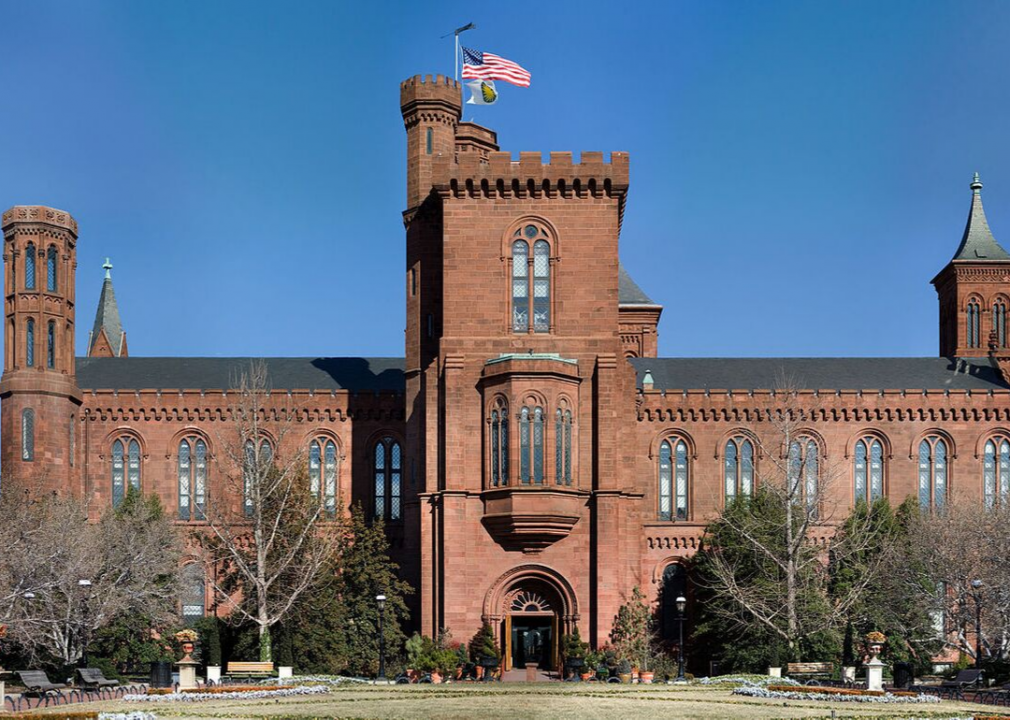
Noclip // Wikimedia Commons
Answer #3: What is the Smithsonian?
Founded in 1846, the Smithsonian Institution comprises several museums, research centers, and libraries. The institution—named after Samuel P. Langley, the Smithsonian's third secretary—awards the Langley Medal for achievements in aeronautics and astronautics. Most of the Smithsonian’s facilities are in Washington D.C., with the institution having close ties to museums in at least 39 states.
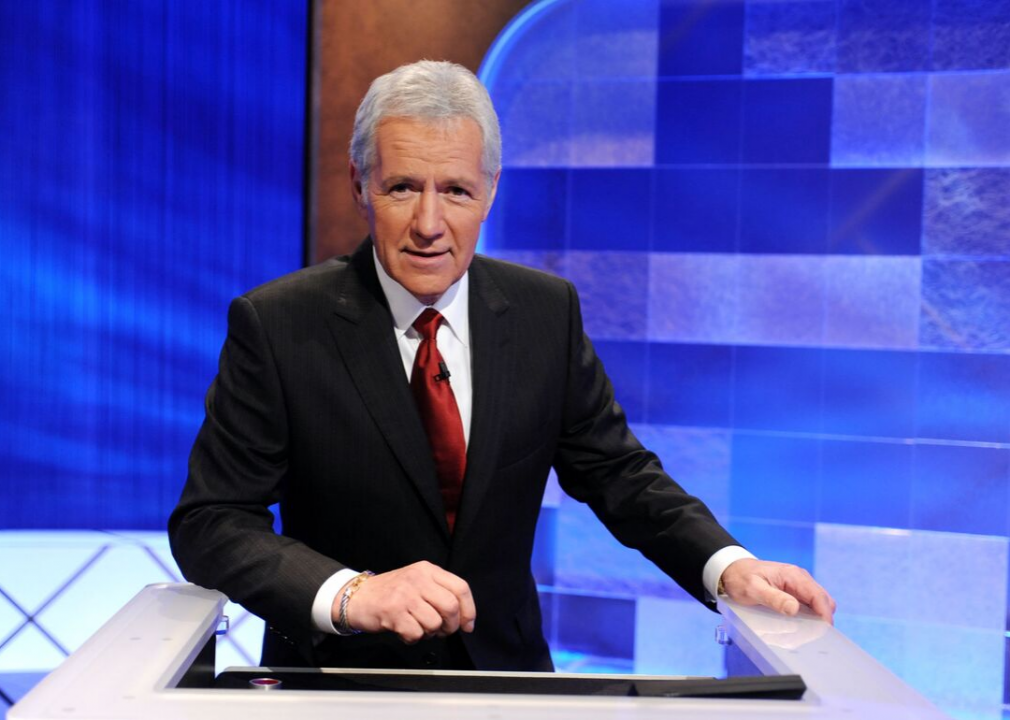
Amanda Edwards // Getty Image
Clue #4
- Clue: Her main qualifications for her June 1963 flight were being a parachutist and a good Communist.
- Category: MANNED SPACE FLIGHT
- Value: $2,000
- Date episode aired: Oct. 29, 2013

Alexander Mokletsov // Wikimedia Commons
Answer #4: Who is Valentina Tereshkova?
Russian cosmonaut Valentina Tereshkova was the first and youngest woman to have flown in space. Before taking to the stars, Tereshkova was an amateur parachutist, and later part of the Soviet Air Force. In 1963, Tereshkova flew a solo mission on the Vostok 6, orbiting Earth 48 times and still remaining the only woman to have flown a solo mission in space.
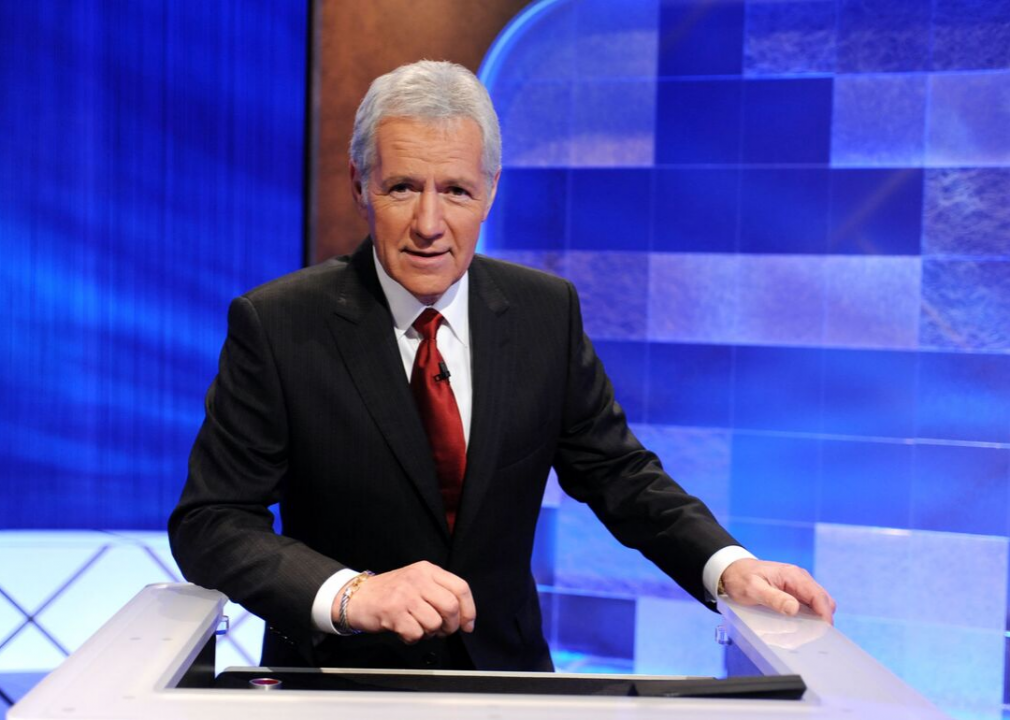
Amanda Edwards // Getty Image
Clue #5
- Clue: A 1990 photo of Earth taken by this space probe prompted Carl Sagan to call planet Earth a "pale blue dot."
- Category: ASTRONOMY
- Value: $1,200
- Date episode aired: Sept. 15, 2016
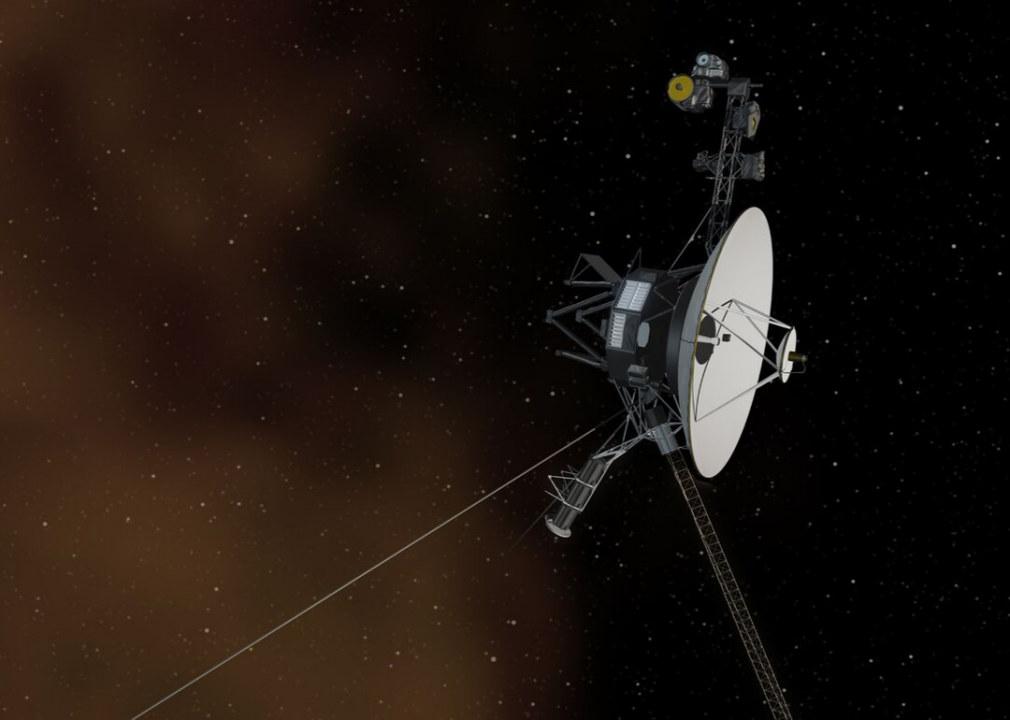
NASA/JPL-Caltech
Answer #5: What is Voyager 1?
Launched in 1977, the space probe called Voyager 1 is currently the most distant man-made object from Earth. In 1990, the probe took a “family portrait” of the solar system, with the Earth appearing as a small, blue speck in the image. The Voyager 1, along with the Voyager 2, carry an audio-video recording called the “Golden Record” meant to serve as a time capsule of sorts about life on Earth for any intelligent life forms who may find it.
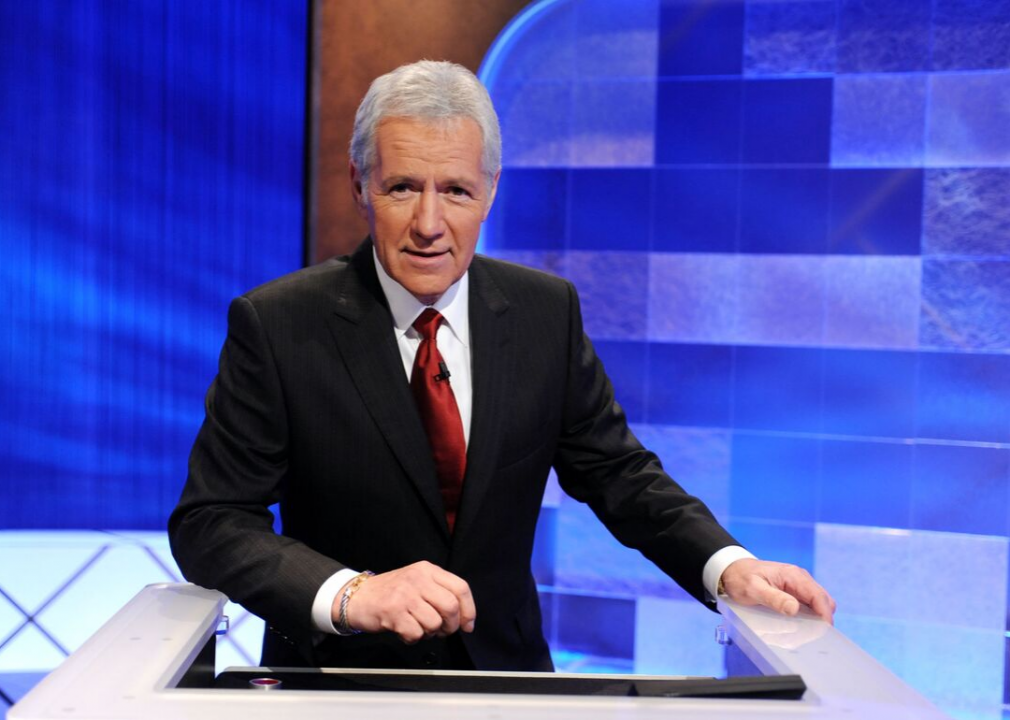
Amanda Edwards // Getty Image
Clue #6
- Clue: He was the first American in space.
- Category: U.S. HISTORY
- Value: $500
- Date episode aired: Dec. 3, 1984
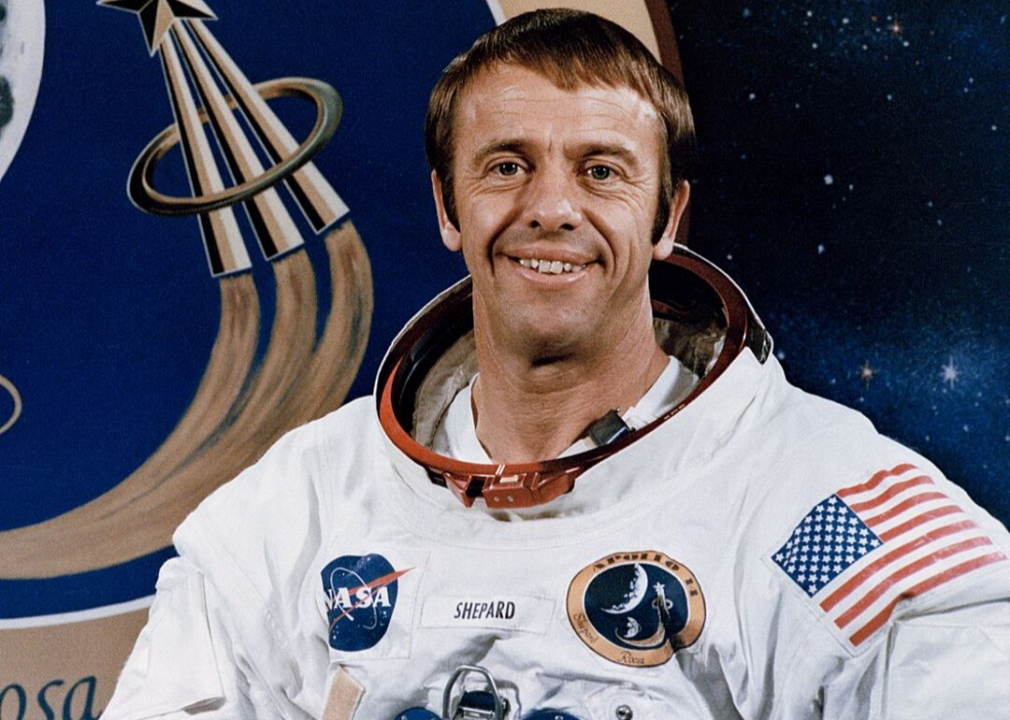
NASA // Wikimedia Commons
Answer #6: Who is Alan Shepard?
Following a period of national anxiety after the Soviet Union launched the Sputnik satellite, Alan Shepard became the first American in space, flying the Freedom 7 space capsule. Before his NASA career, Shepard had a distinguished career in the Navy. Shepard walked on the Moon in 1971 while participating in the Apollo 14 mission.
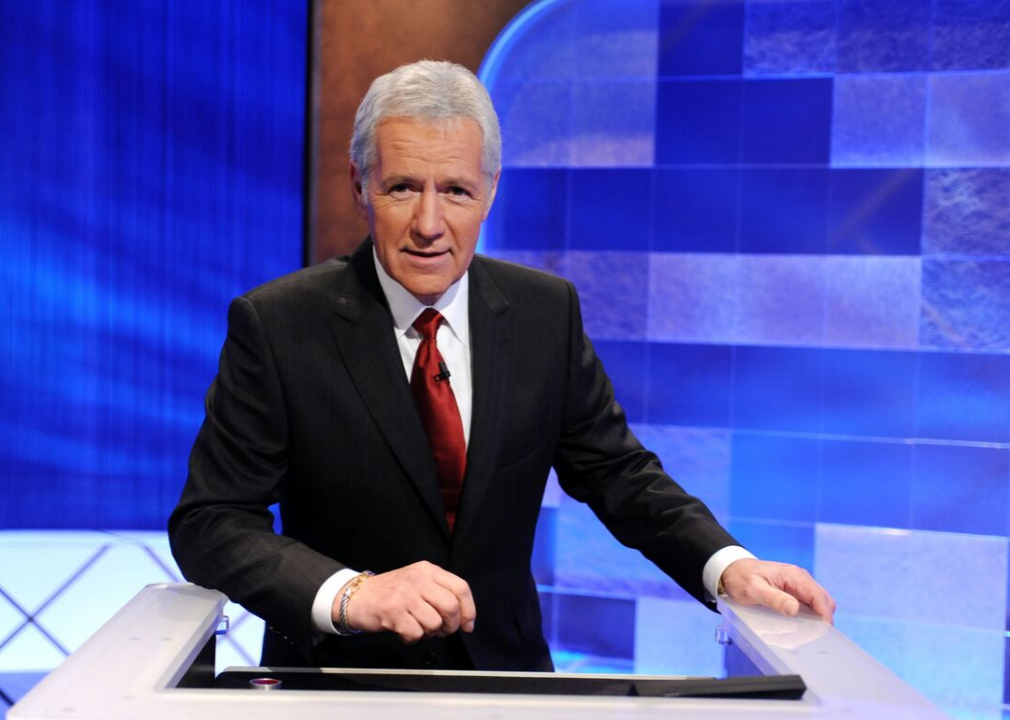
Amanda Edwards // Getty Image
Clue #7
- Clue: In 2008, this astronomer for whom a space telescope is named was honored on a U.S. postage stamp.
- Category: ASTRONOMERS
- Value: $400
- Date episode aired: June 19, 2013
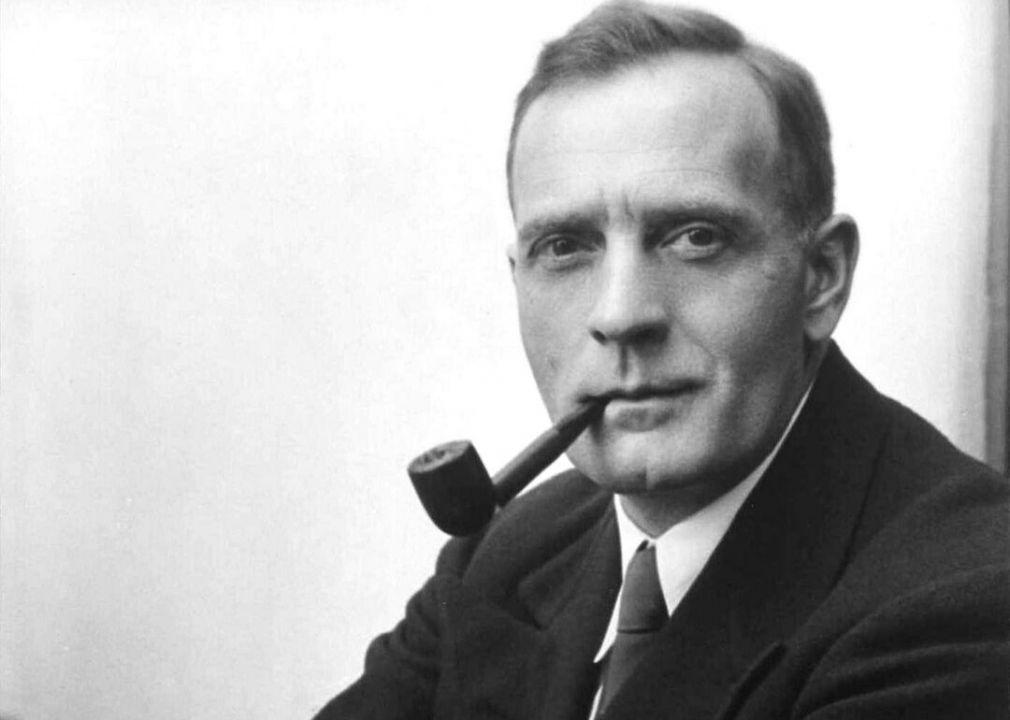
Johan Hagemeyer // Wikimedia Commons
Answer #7: Who is Hubble?
Edwin Hubble was one of the most renowned astronomers in history, discovering that the universe goes beyond the Milky Way galaxy. Other than the Hubble Telescope, an observation known as Hubble’s law is a basis in the Big Bang model and the idea of the expanding universe. Hubble advocated for the Nobel Prize Committee’s Prize in Physics to acknowledge astronomy, which came into effect after his death.
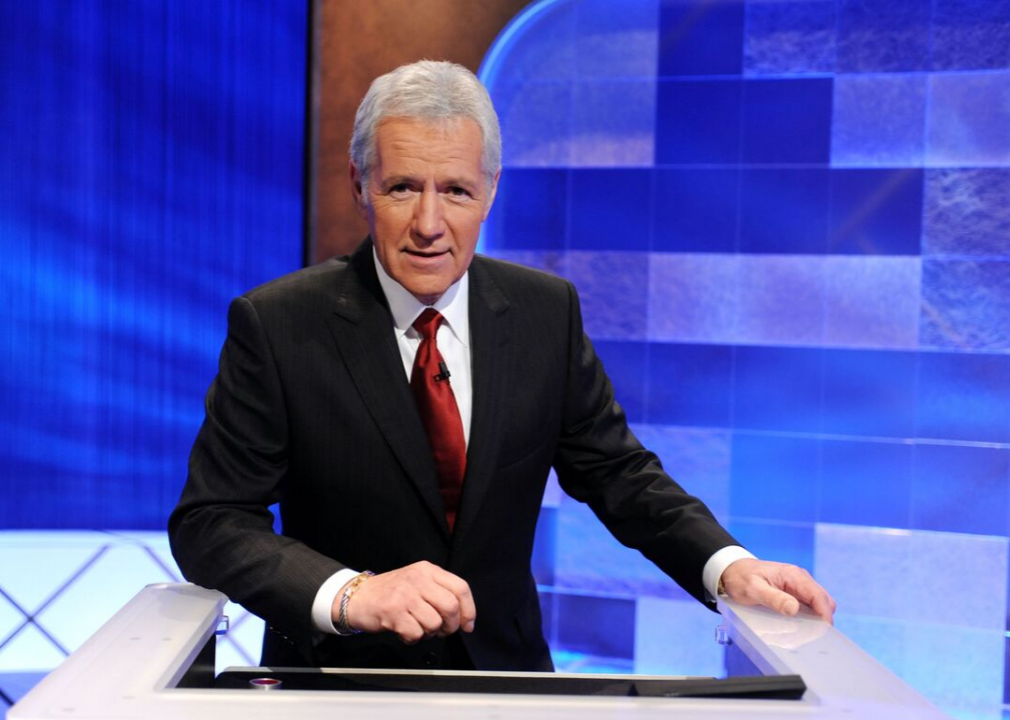
Amanda Edwards // Getty Image
Clue #8
- Clue: Comet in 1973 which didn't put on its promised show.
- Category: SPACE
- Value: $$1,500 (Daily Double)
- Date episode aired: Nov. 27, 1984
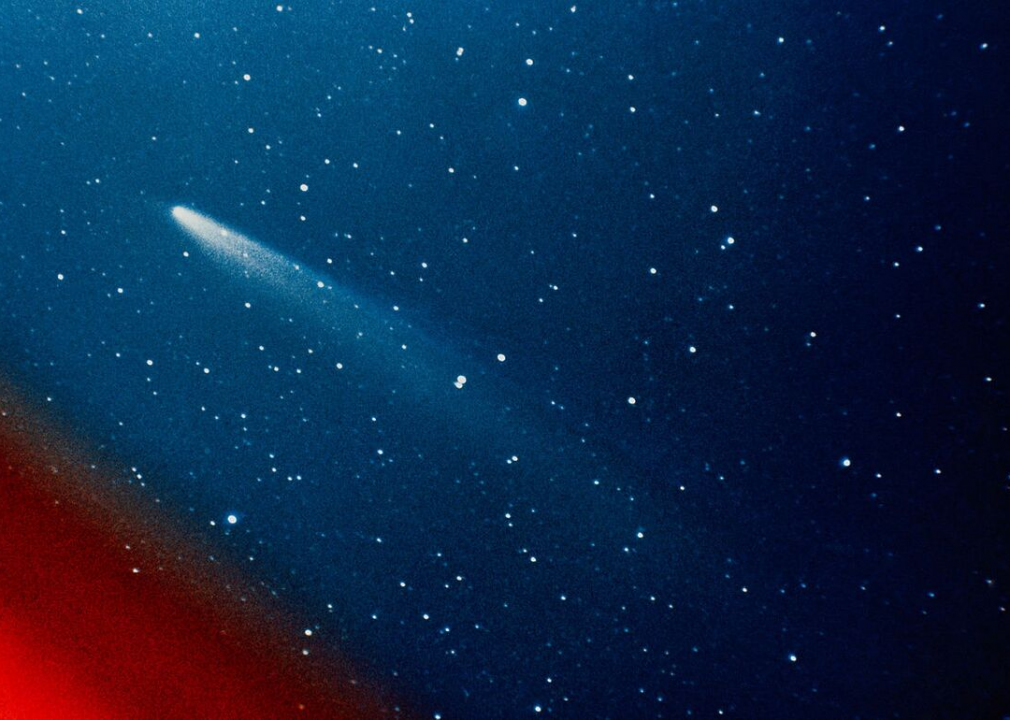
NASA // Wikimedia Commons
Answer #8: What is Kohoutek?
Hyped up by the media as the “comet of the century,” Comet Kohoutek was due to appear in late 1973. While the comet was still visible to the naked eye, Kohoutek was not as bright as initially predicted, leading the event to be labelled a disappointment.
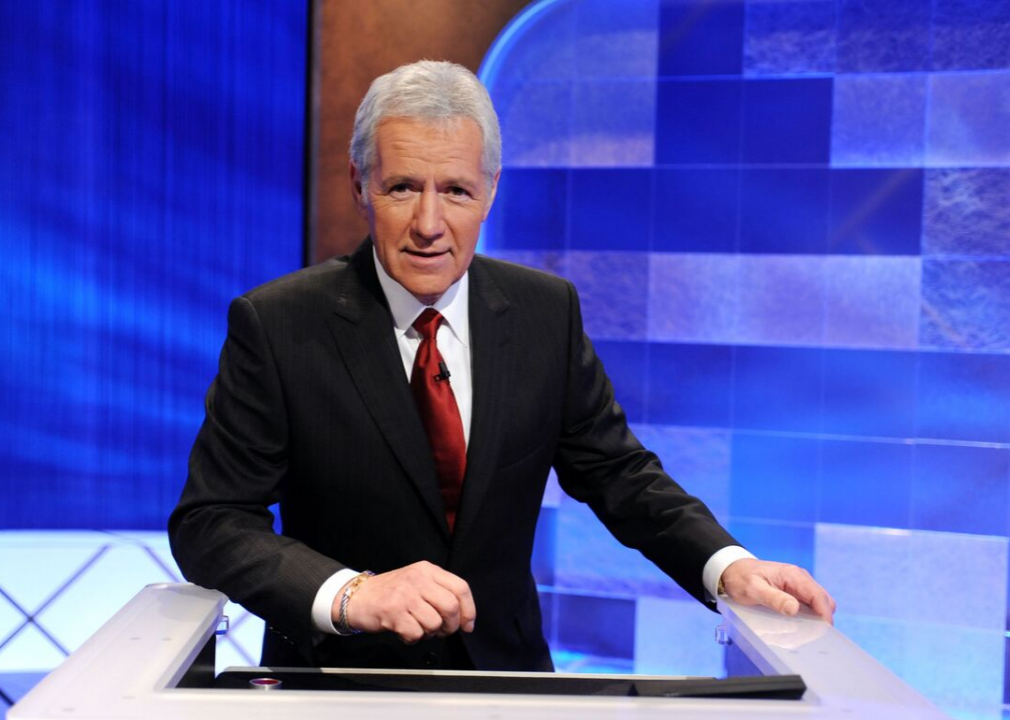
Amanda Edwards // Getty Image
Clue #9
- Clue: While Neil Armstrong and Edwin Aldrin explored the moon, he orbited about 70 miles above.
- Category: SPACE EXPLORATION
- Value: $$800 (Daily Double)
- Date episode aired: April 1, 1991
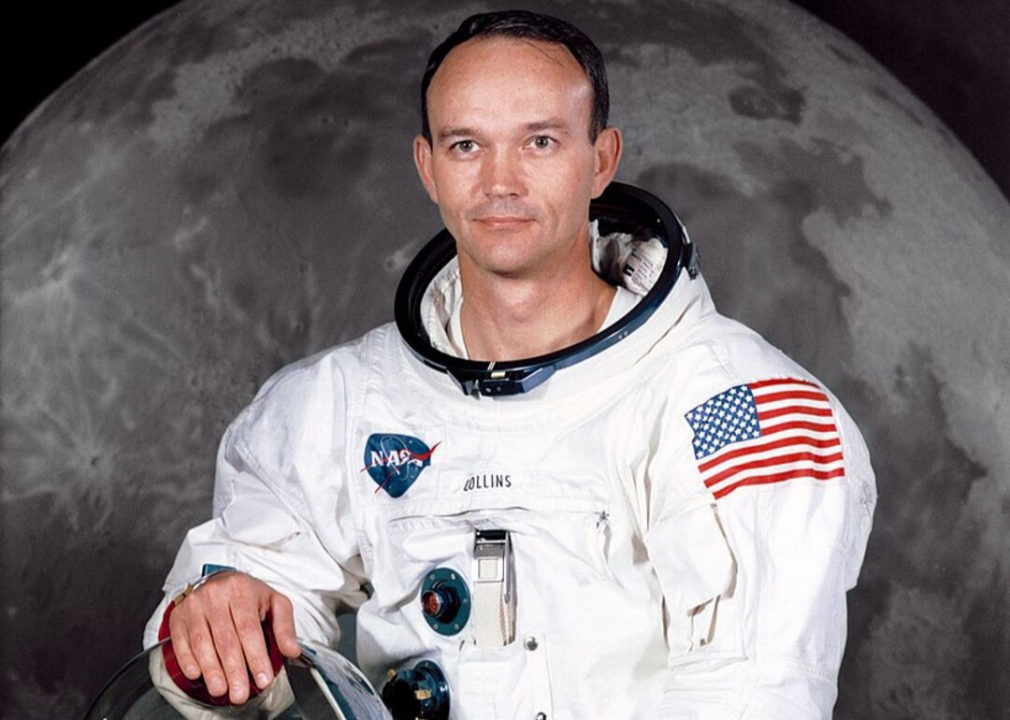
NASA // Wikimedia Commons
Answer #9: Who is Michael Collins?
Astronaut Michael Collins has the distinction of flying in the Apollo 11 mission, his second spaceflight. Before becoming an astronaut, Collins graduated from the United States Military Academy and served in the United States Air Force. His first spaceflight was on Gemini 10 in 1966.
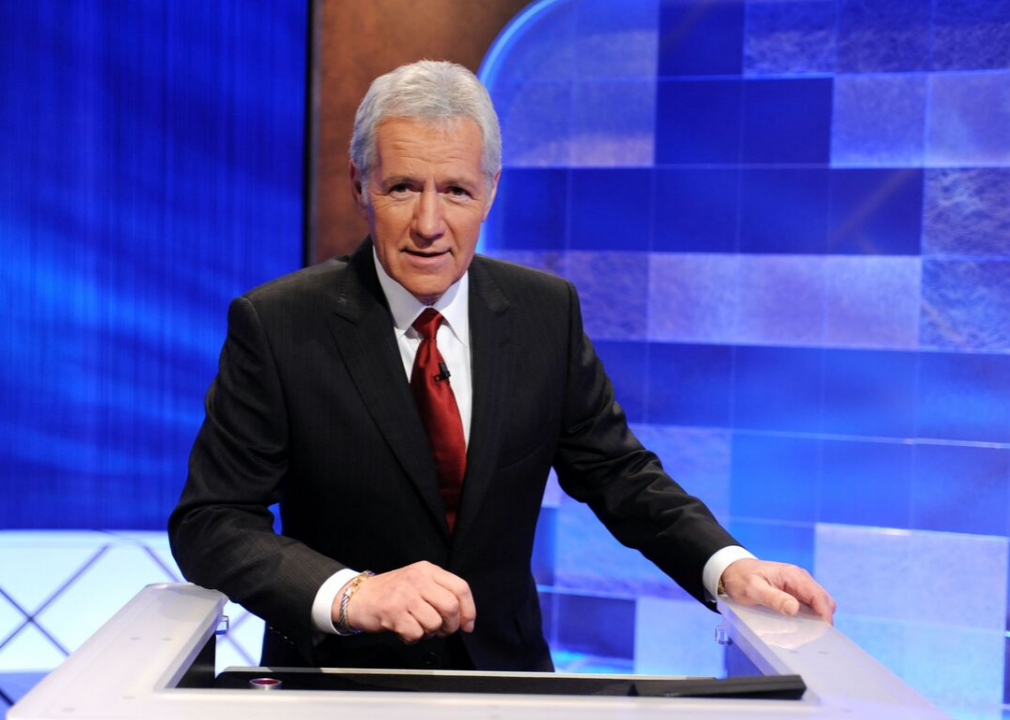
Amanda Edwards // Getty Image
Clue #10
- Clue: He was the first to touch down rather than splash down.
- Category: SPACE FIRSTS
- Value: $800
- Date episode aired: Dec. 16, 1992
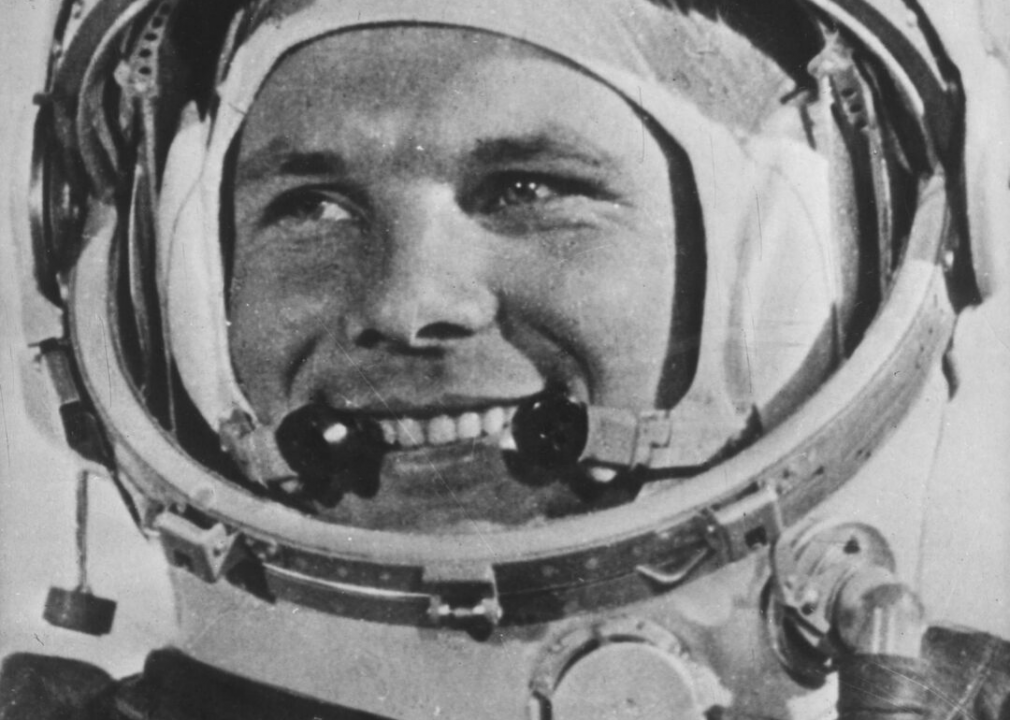
Keystone // Getty Images
Answer #10: Who is Yuri Gagarin?
Soviet cosmonaut Yuri Gagarin made history in 1961 when he became the first human being to journey into outer space. Gagarin flew on the Vostok 1 space capsule, which orbited around the Earth one time. Prior to his spaceflight, Gagarin was a Soviet Air Forces pilot; after his first and only spaceflight, Gagarin was declared a Hero of the Soviet Union.
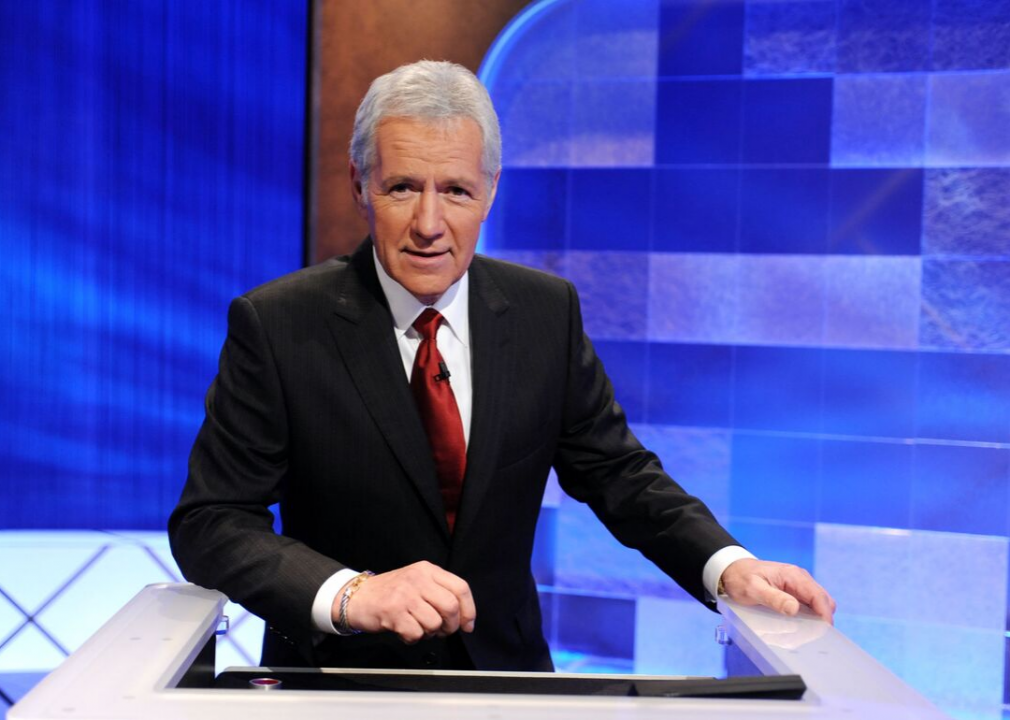
Amanda Edwards // Getty Image
Clue #11
- Clue: An approaching one of these named Elenin caused fear in 2011; in the end, a NASA scientist said his car had more pull on Earth.
- Category: SPACE: THE FINAL CATEGORY
- Value: $1,200
- Date episode aired: April 4, 2012
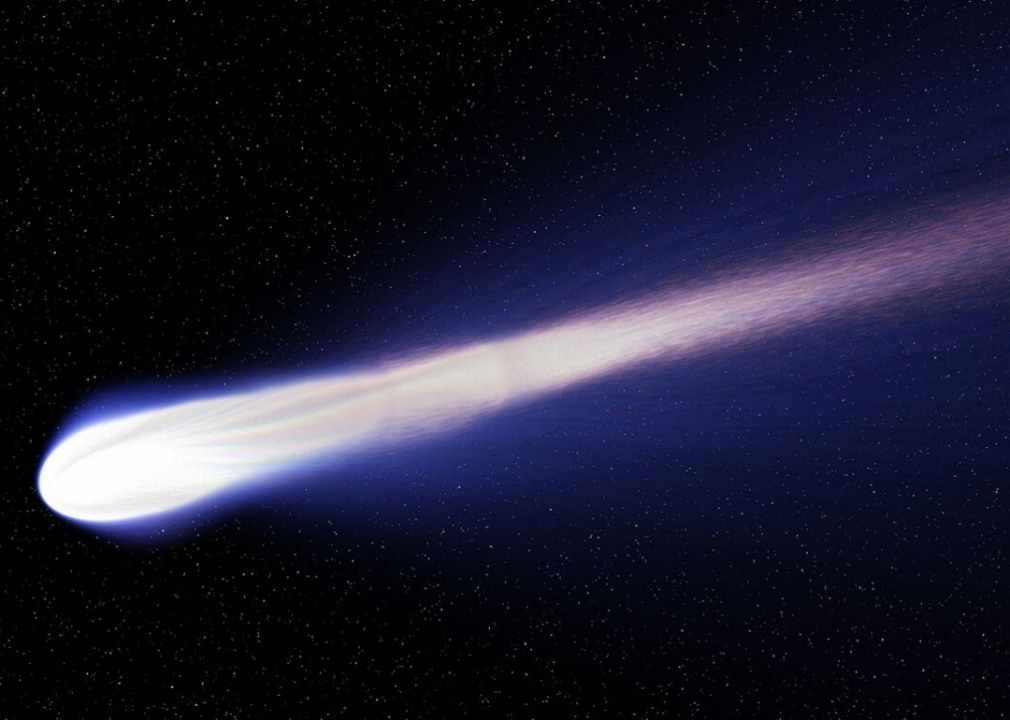
Pixabay
Answer #11: What is a comet?
Comets are icy, small solar system bodies that warm and release gas upon passing by the sun, producing a visible tail. Russian amateur astronomer Leonid Elenin spotted such a comet in December 2010, and it became more visible during 2011. During that time, it began to disintegrate and was no longer visible by October of that year.
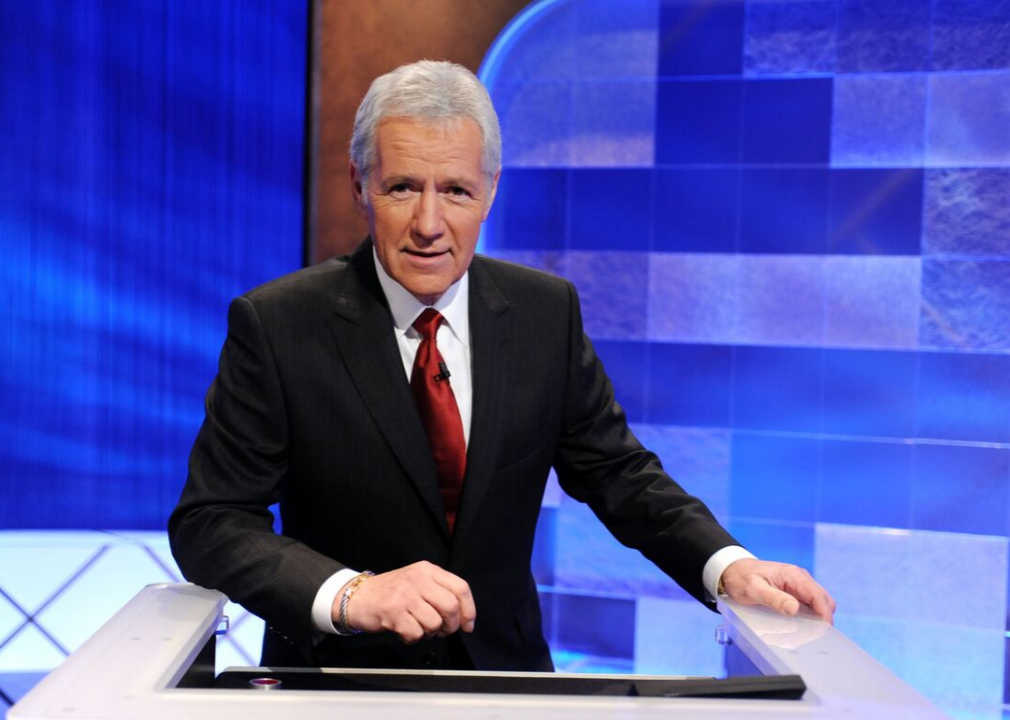
Amanda Edwards // Getty Image
Clue #12
- Clue: Johann Bode proposed the name of a mythological father for this planet.
- Category: SPACE
- Value: $400
- Date episode aired: Nov. 1, 2001
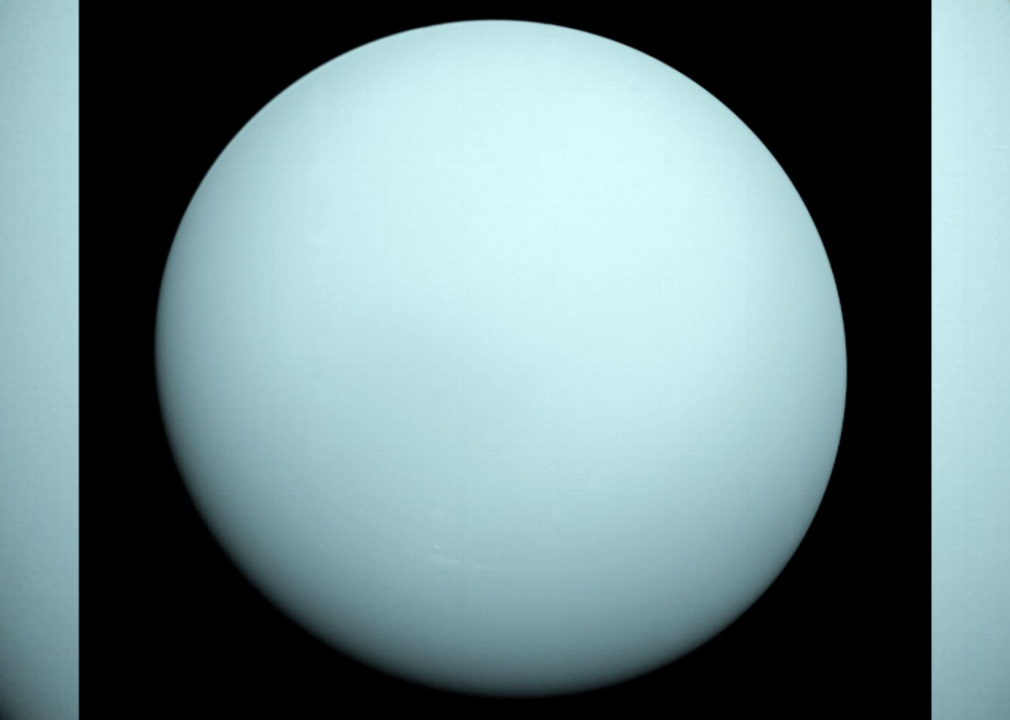
NASA/JPL-Caltech // Wikimedia Commons
Answer #12: What is Uranus?
The seventh planet from the Sun, Uranus joins Neptune as the “ice giants” of the solar system. It has several moons and a ring system, but it is significant and unique in the solar system for having a sideways axis of rotation. While many of the solar system planets are named from Roman mythology, Uranus is named from Greek mythology.
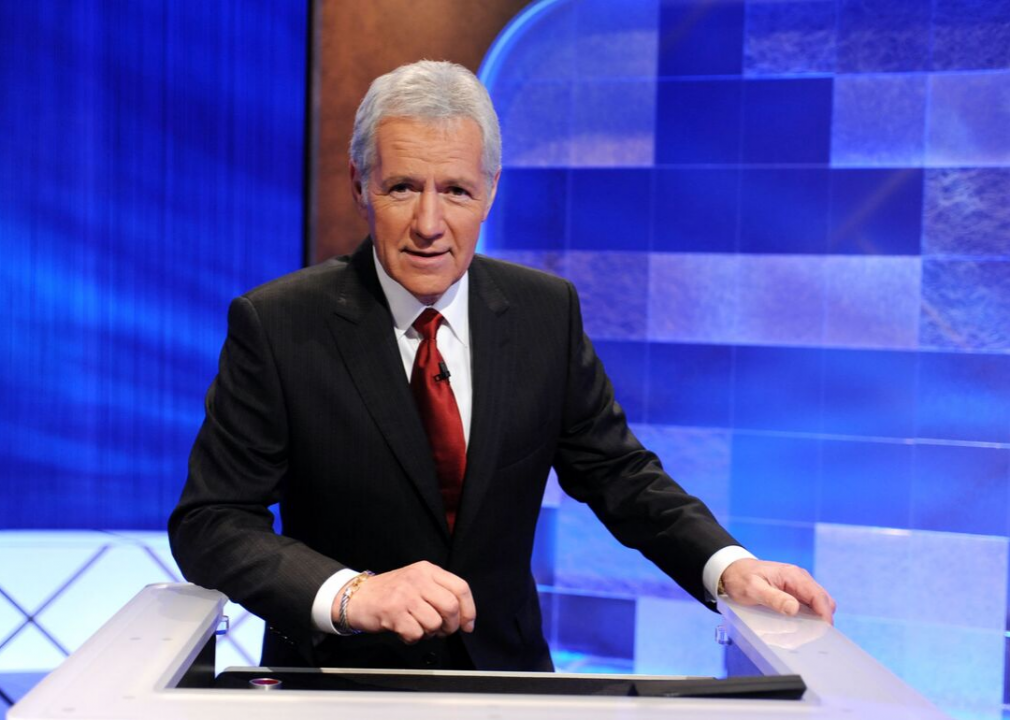
Amanda Edwards // Getty Image
Clue #13
- Clue: Try and come up with this name of the Apollo 15 command module or the shuttle first launched in 1992.
- Category: LOTS OF SPACE
- Value: $2,000
- Date episode aired: Sept. 8, 2004
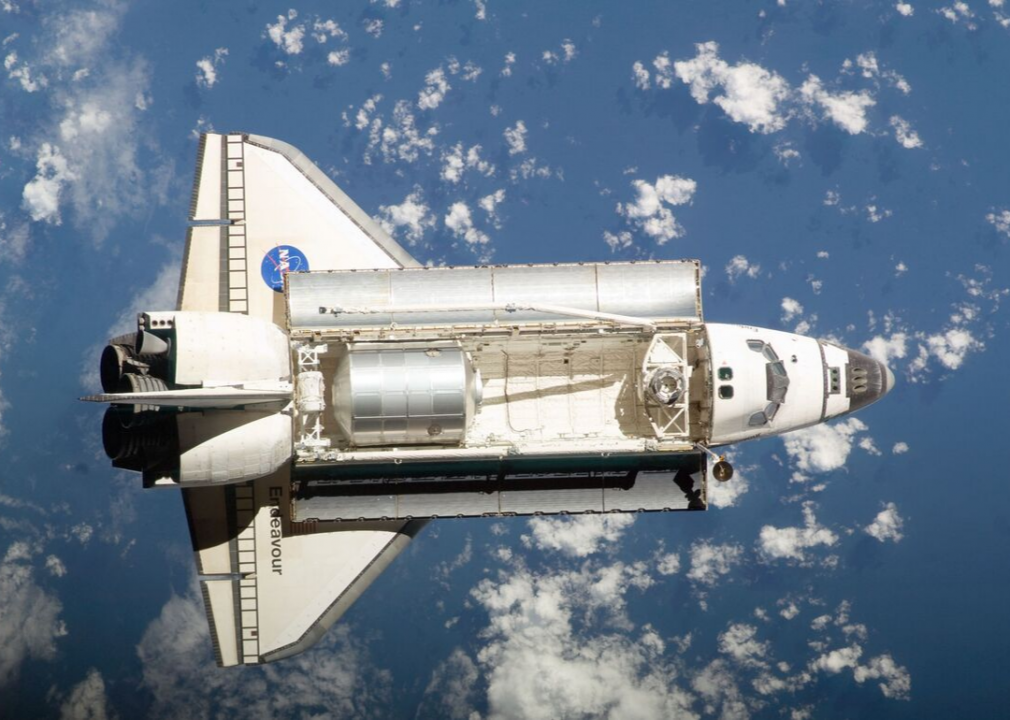
PxHere
Answer #13: What is Endeavor?
The British ship HMS Endeavor still had influence long after its time, being the name inspiration for two different spacecraft in the 20th century. Apollo 15 had the command and service module CSM-112, which was given the call-sign Endeavor. Also sharing the name was the Space Shuttle Endeavour, which first launched in 1992 and had its final mission in 2011 before its decommissioning.
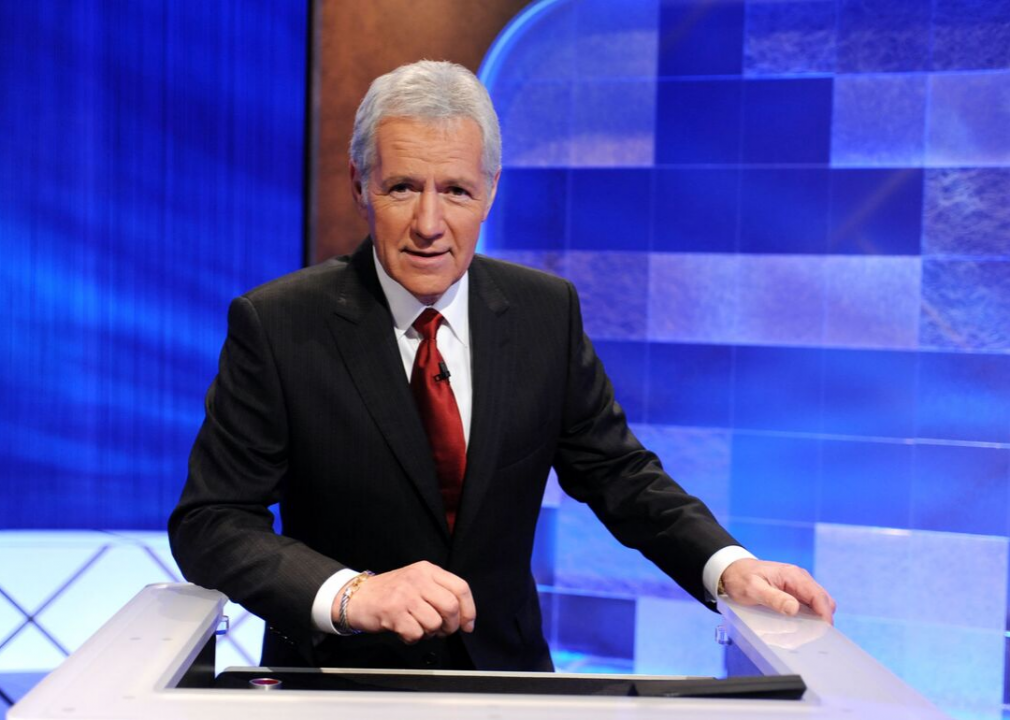
Amanda Edwards // Getty Image
Clue #14
- Clue: It has been under observation by the Cassini spacecraft since 2004.
- Category: WHICH PLANET?
- Value: $800
- Date episode aired: Feb. 29, 2016
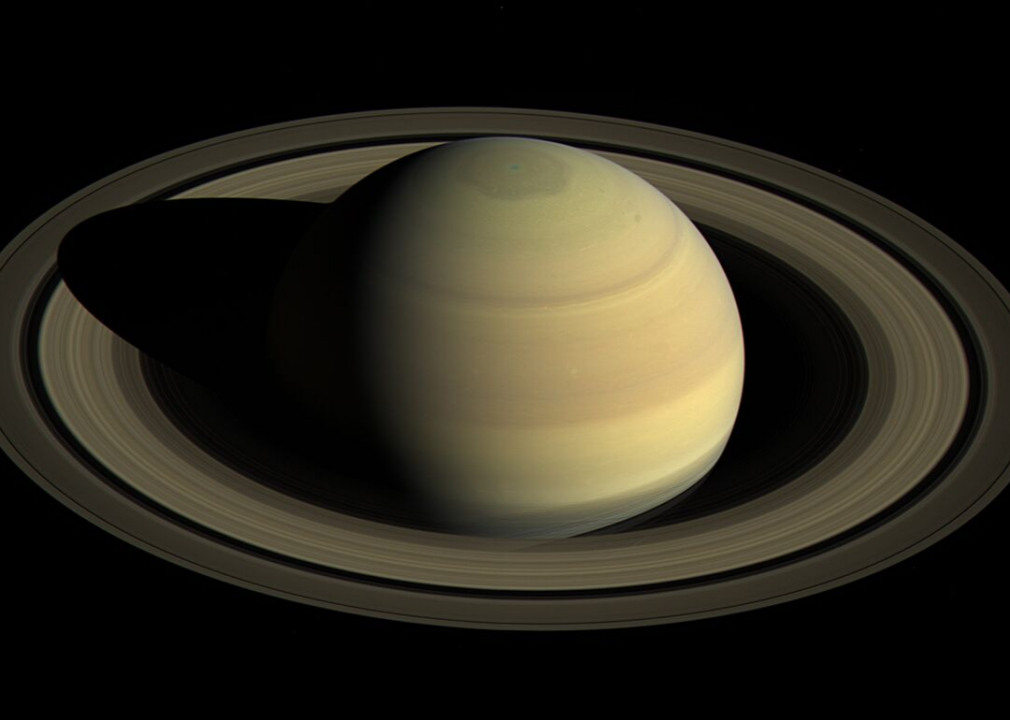
NASA/JPL-Caltech/Space Science Institute
Answer #14: What is Saturn?
The second-largest planet in the solar system is Saturn, best known for its distinctive ring system. Its rings are mostly made up of ice, dust, and debris. The Cassini spacecraft has since informed astronomers and scientists of the many visual and physical properties of the planet, along with many natural phenomena occurring on it. The Cassini completed its mission shortly after this "Jeopardy!" episode aired, disintegrating as it plunged into Saturn's crushing atmosphere.
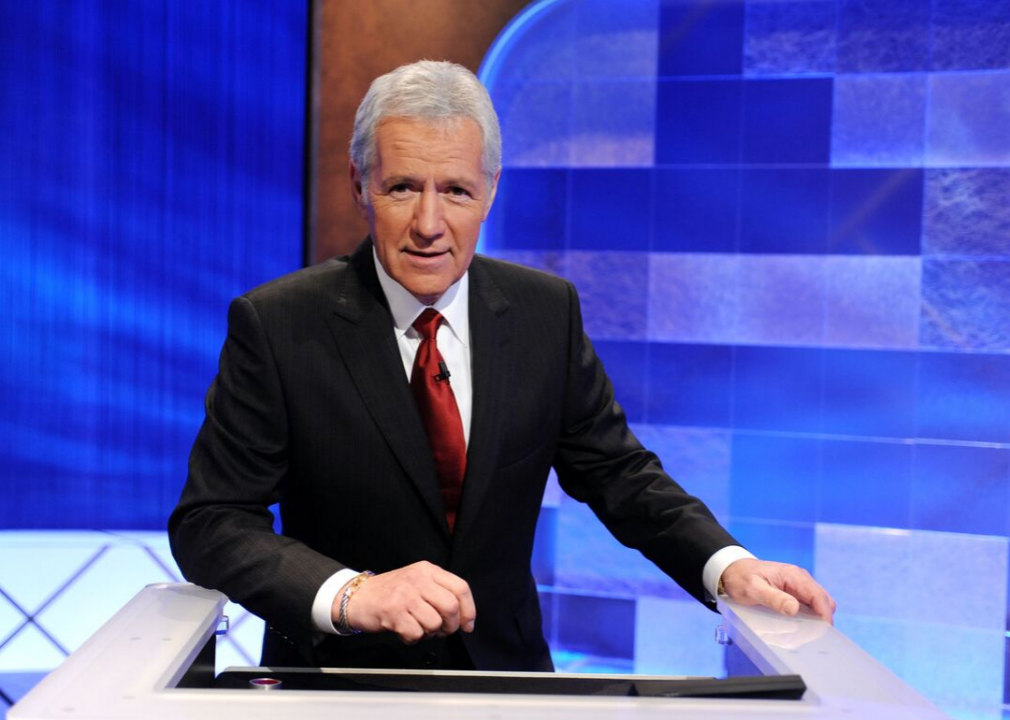
Amanda Edwards // Getty Image
Clue #15
- Clue: Six-letter word for a large piece of rock from space that passes into Earth's atmosphere.
- Category: IT'S ALL ABOUT "ME"
- Value: $800
- Date episode aired: May. 13, 2015
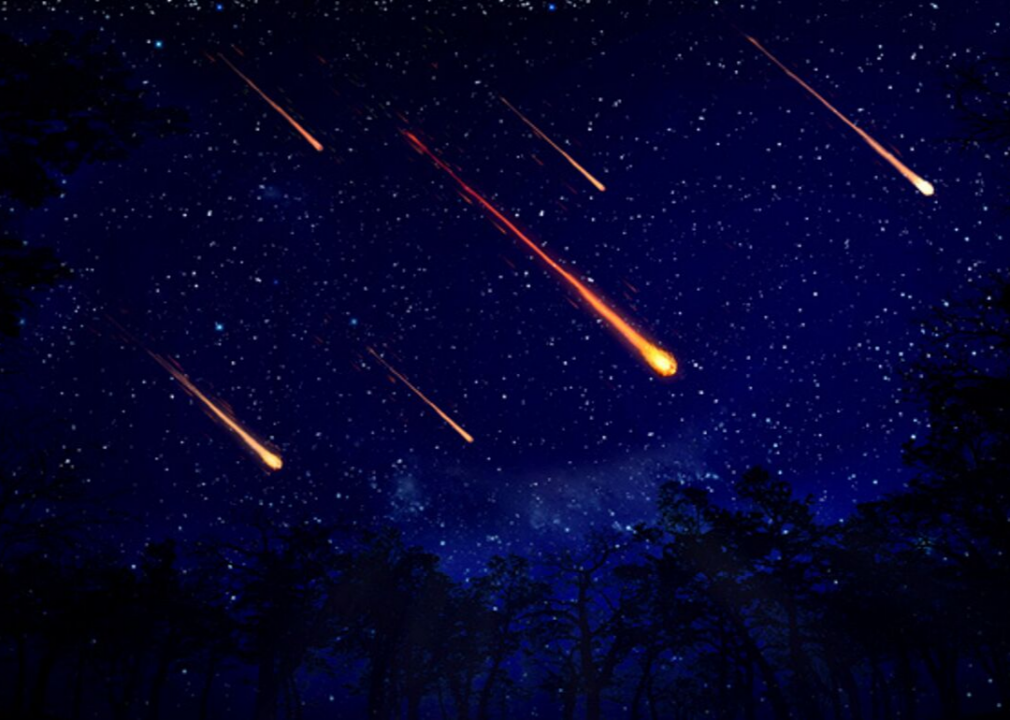
NPS Photo
Answer #15: What is a meteor?
Meteoroids are generally small rocky or metallic bodies in space, some being formed from debris and most coming from asteroids and comets. Upon entering Earth’s atmosphere, meteors leave a visible trail that leads meteors to be nicknamed “shooting stars.” Meteors originating from the same point and appearing close in time to each other make up meteor showers.
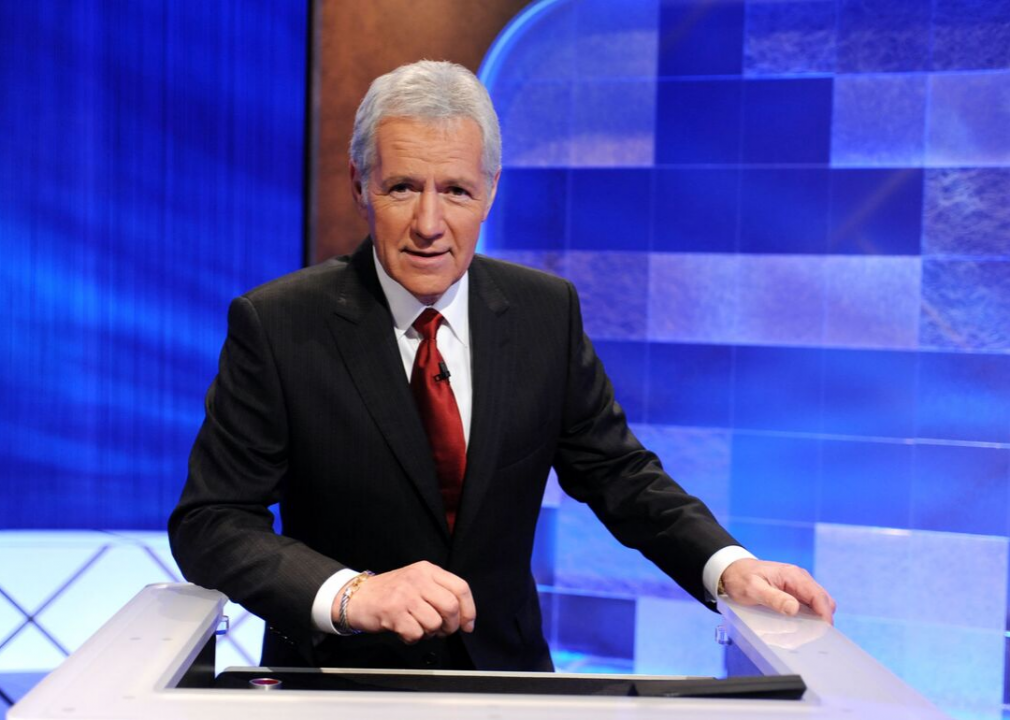
Amanda Edwards // Getty Image
Clue #16
- Clue: Our galaxy contains hundreds of billions of them, but only about 3,000 are visible to the naked eye.
- Category: SPACED OUT
- Value: $200
- Date episode aired: June 19, 2014
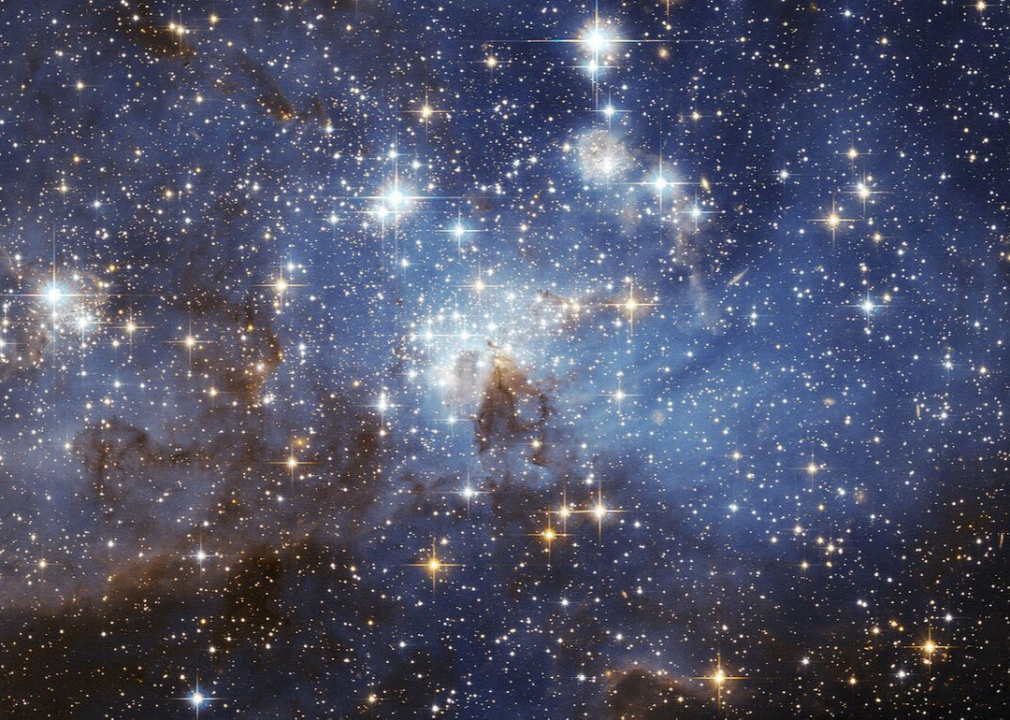
ESA/Hubble // Wikimedia Commons
Answer #16: What are stars?
A star is a sphere of plasma held together by its own gravity, with the closest star to Earth being the sun. Thousands of stars are visible from the surface, appearing as fixed luminous points. These stars are then grouped into patterns and shapes known as constellations.
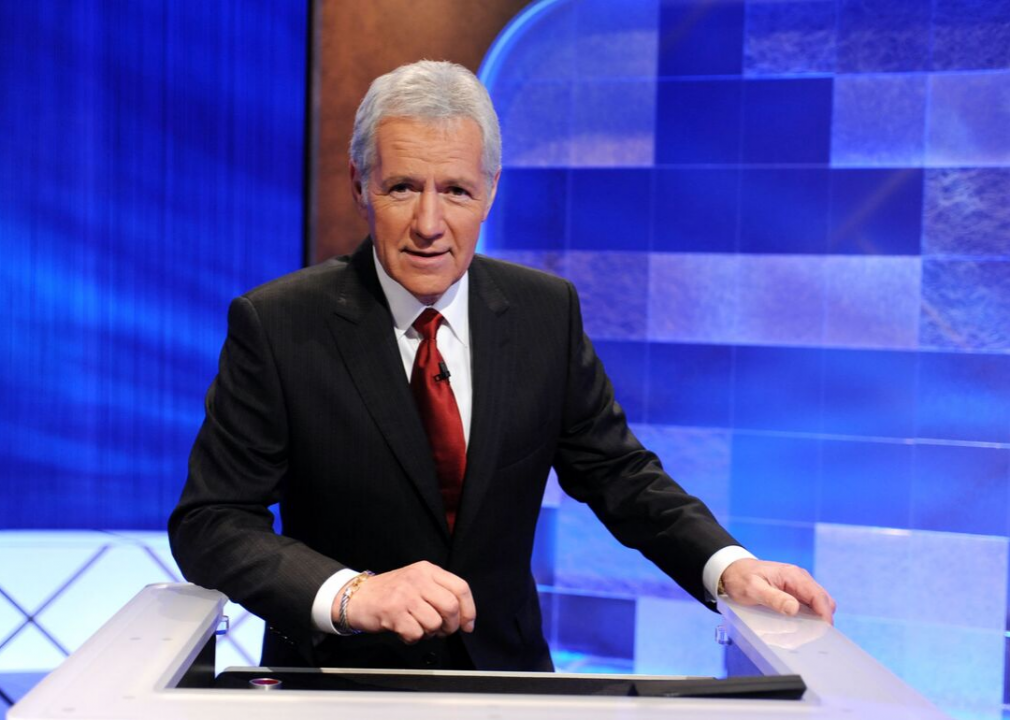
Amanda Edwards // Getty Image
Clue #17
- Clue: In 2010 Japan's Hayabusa spacecraft brought back dust samples from Itokawa, one of these objects.
- Category: ASTRONOMY
- Value: $1,200
- Date episode aired: Jan. 15, 2014
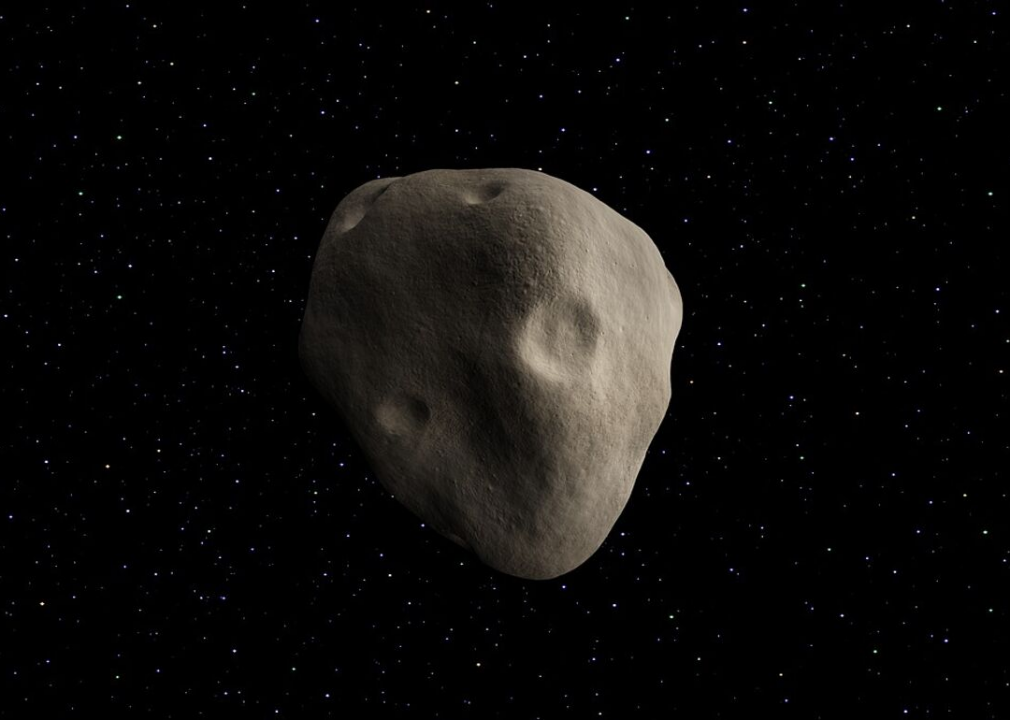
MaxPixel
Answer #17: What is an asteroid?
Asteroids are actually classified as minor planets in the solar system, orbiting around the sun while being neither a planet nor a comet. These are bodies that are mostly composed of mineral and rock, as opposed to comets, which are made of ice and dust. The Itokawa asteroid has been heavily studied ever since the Hayabusa spacecraft returned to Earth with materials from the asteroid.
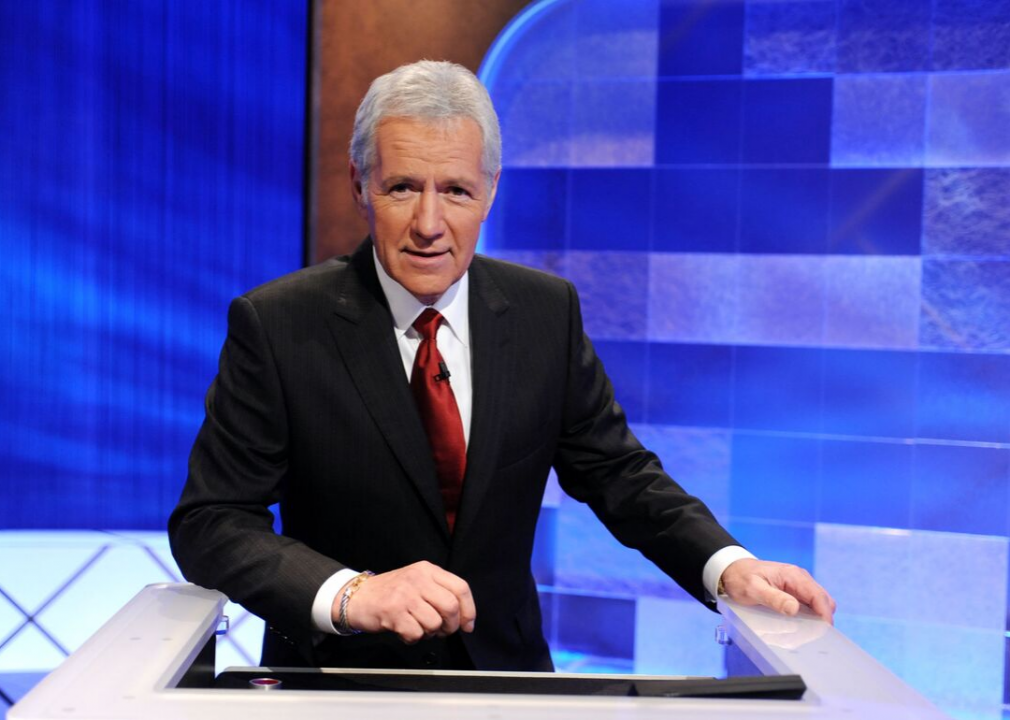
Amanda Edwards // Getty Image
Clue #18
- Clue: In 1992, aboard the Endeavour, she became the 1st African American woman in space.
- Category: ASTRONOMY & SPACE
- Value: $1,000
- Date episode aired: Oct. 11, 1996
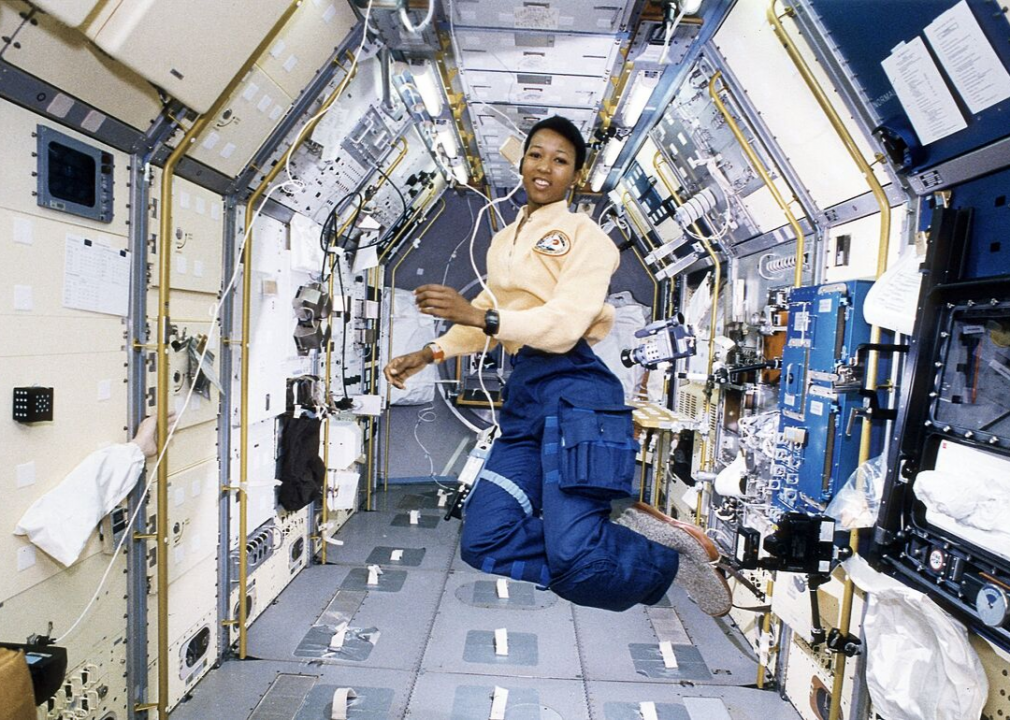
NASA // Flickr
Answer #18: Who is Mae Jemison?
Former astronaut Mae Jemison served on the Space Shuttle Endeavour, orbiting the Earth for eight days in 1992. Before applying to NASA, Jemison studied chemical engineering and African-American studies. After leaving NASA in 1993, Jemison founded a research company and also taught as a professor.
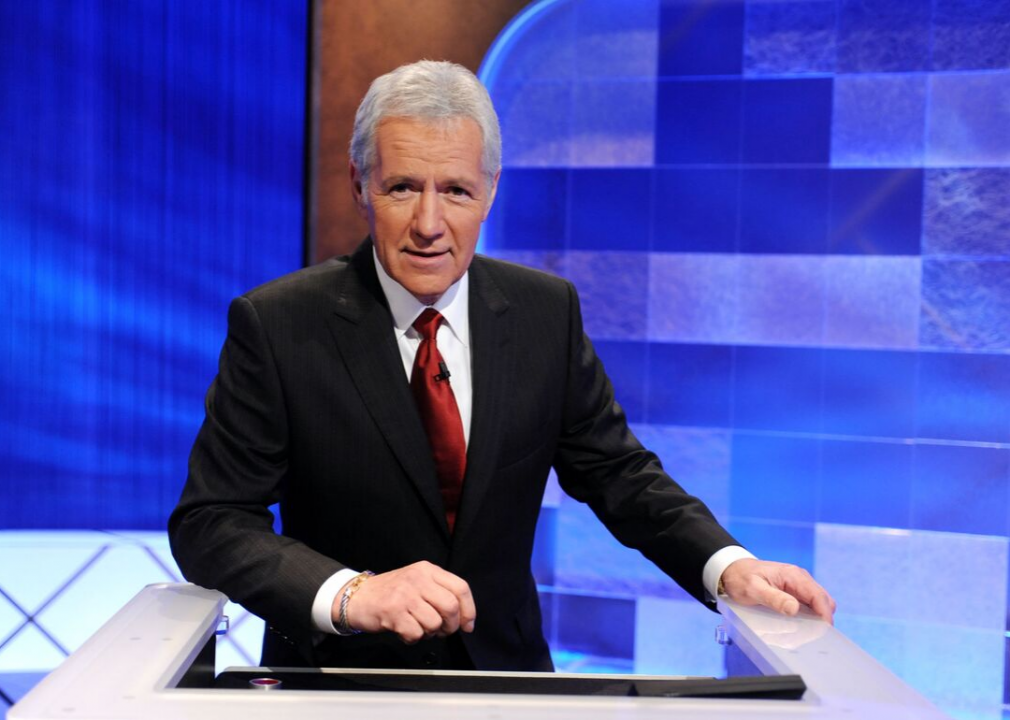
Amanda Edwards // Getty Image
Clue #19
- Clue: The light and radio energy emitted by quasars may come from gases being sucked into these.
- Category: OUTER SPACE
- Value: $600
- Date episode aired: May. 23, 1997
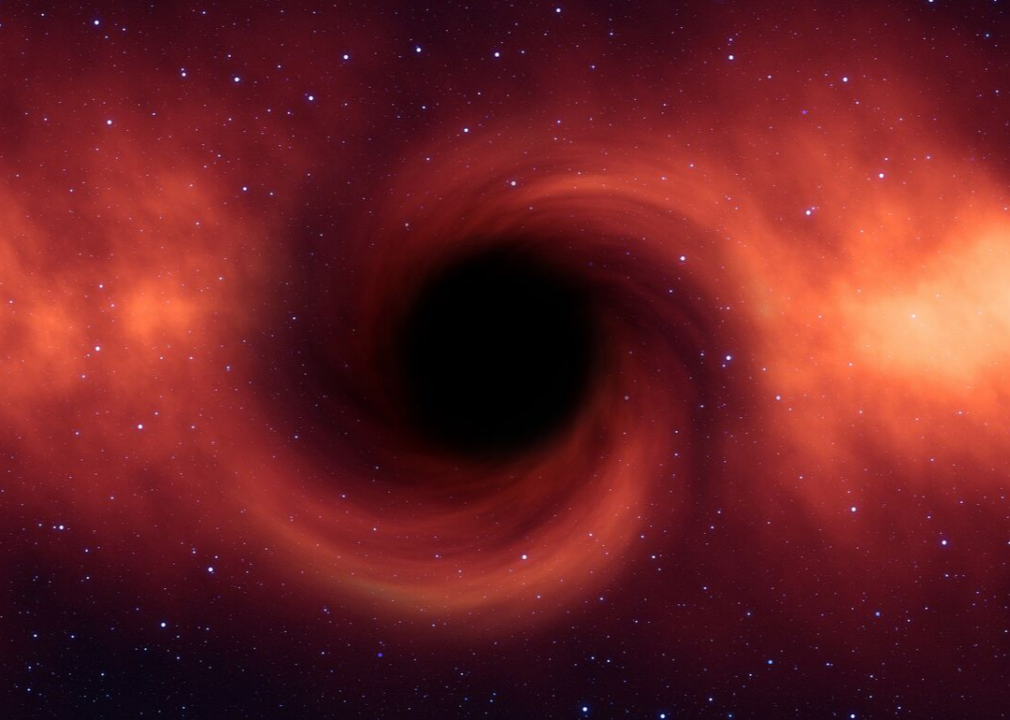
Pixabay
Answer #19: What are black holes?
Made famous by pop-cultural depictions (despite some inaccuracies), black holes have intensely high gravitational acceleration. The gravitational force is strong enough that not even radiation or light particles can escape from it. April 2019 marked the first time a black hole was ever captured with an image, thanks to the Event Horizon Telescope.
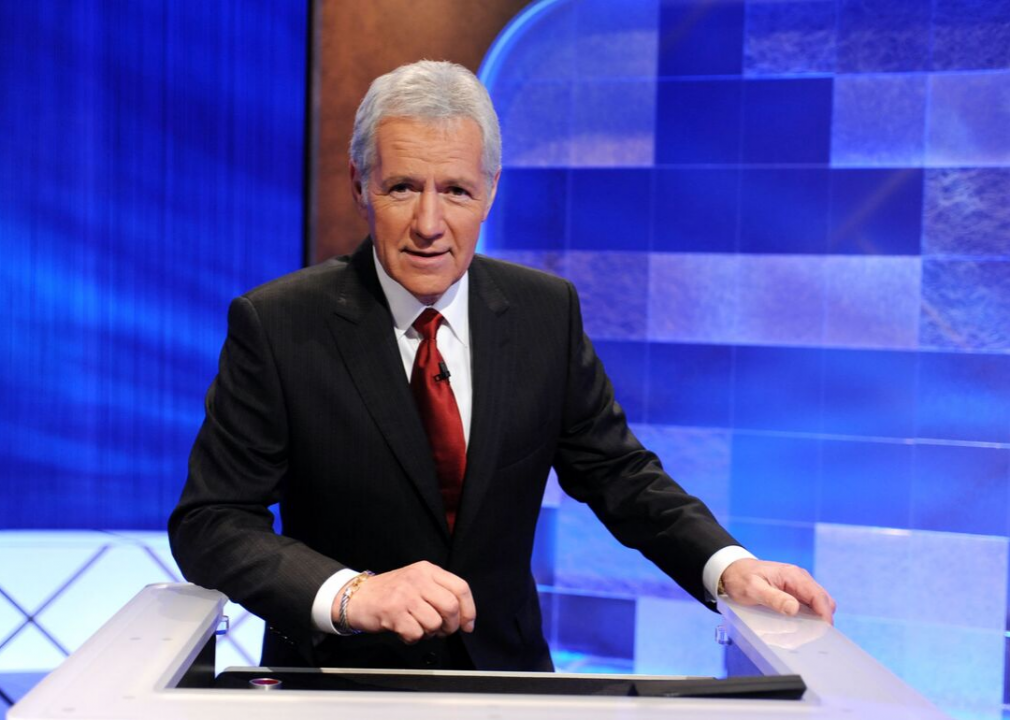
Amanda Edwards // Getty Image
Clue #20
- Clue: On Oct. 4, Russia launched this first satellite into space.
- Category: 1957
- Value: $200
- Date episode aired: Sept. 24, 1997
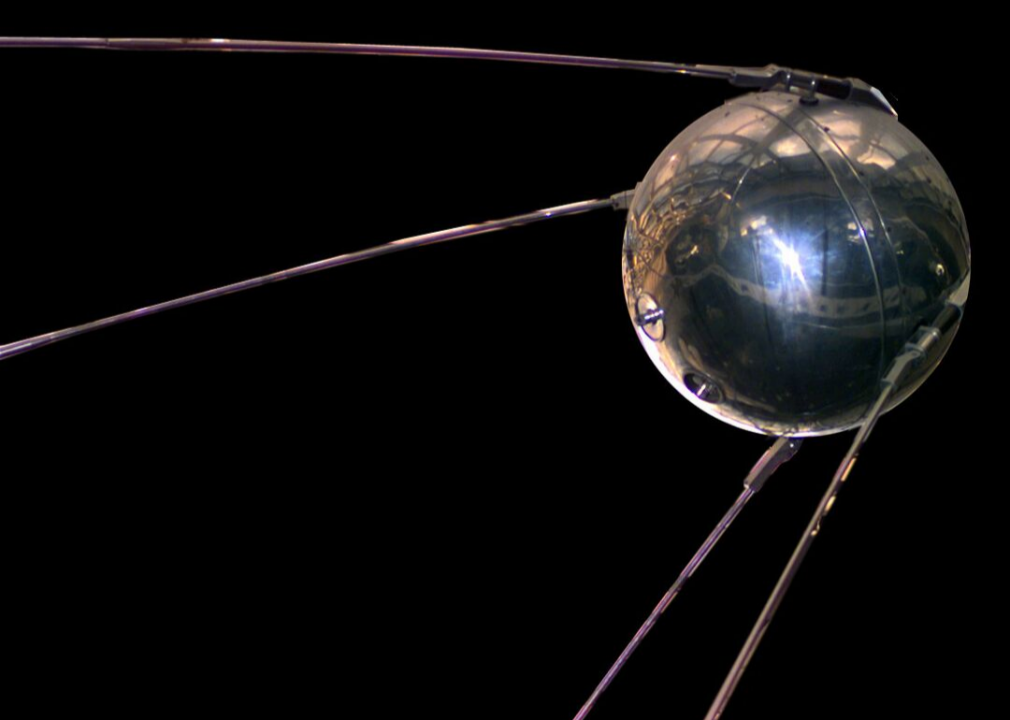
NSSDC/NASA // Wikimedia Commons
Answer #20: What is Sputnik?
The first artificial satellite came from the then-Soviet Union, which sent the Sputnik 1 satellite in 1957. This launch was the first move of the Space Race between the United States and the Soviet Union, creating a scientific front of the Cold War. The satellite orbited around Earth 1,440 times.
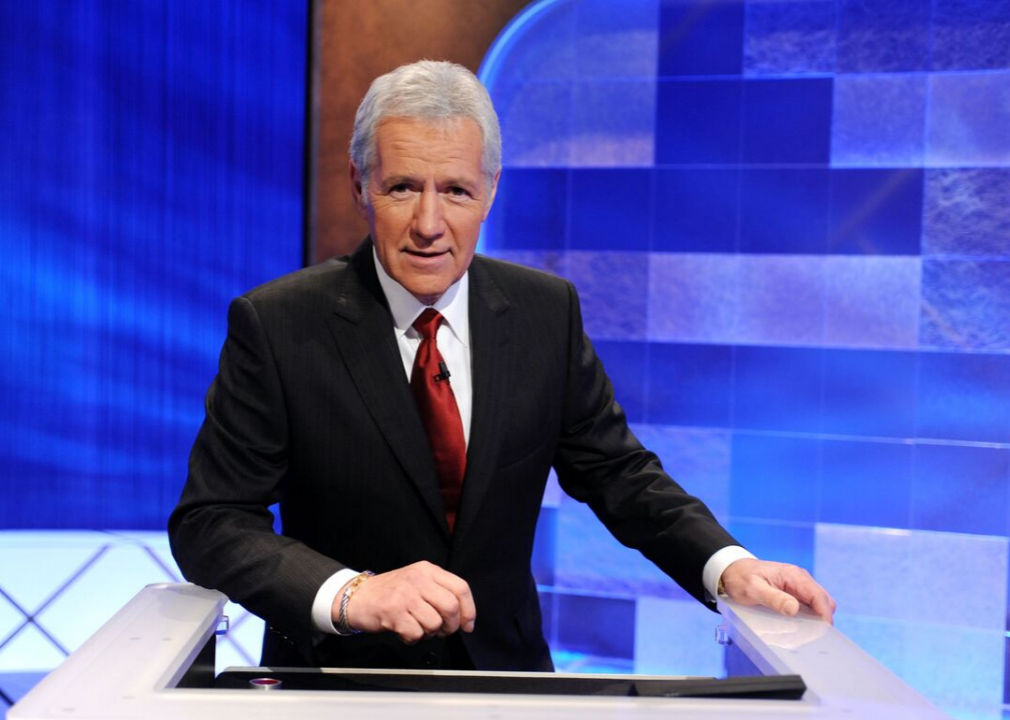
Amanda Edwards // Getty Image
Clue #21
- Clue: Discovered on Jan. 1 1801, 580-mile-diameter Ceres is the largest known of these celestial bodies.
- Category: SPACE
- Value: $1,000
- Date episode aired: Sept. 28, 2001
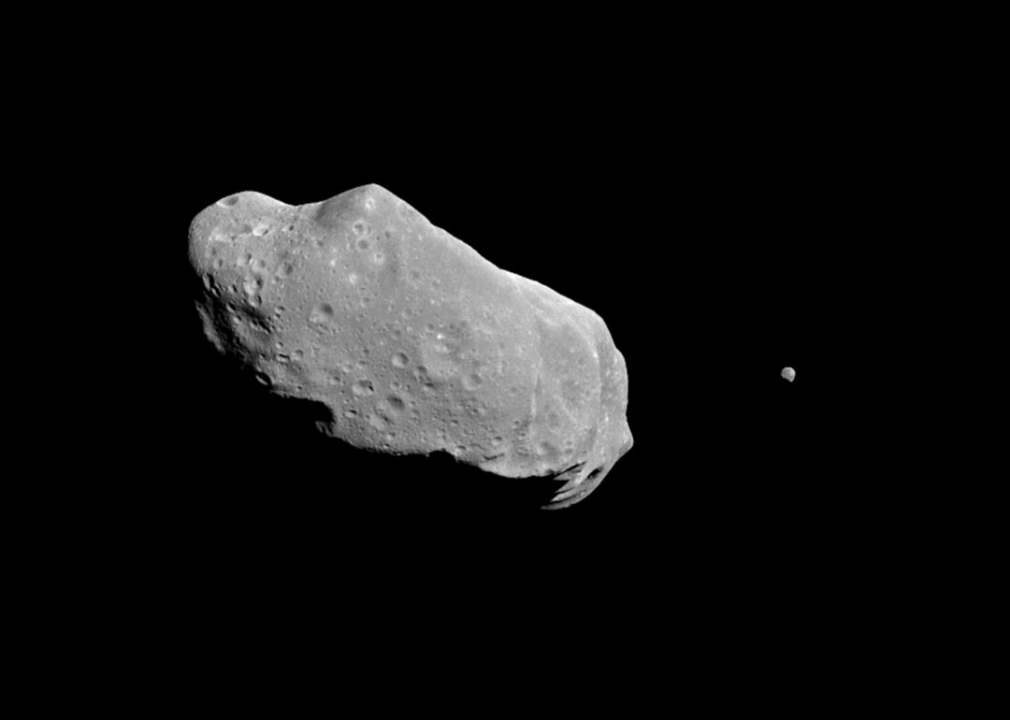
NASA/JPL
Answer #21: What are asteroids?
Asteroids are actually classified as minor planets in the solar system, orbiting around the sun while being neither a planet nor a comet. These are bodies that are mostly composed of mineral and rock, as opposed to comets, which are made of ice and dust. The dwarf planet named Ceres is the largest asteroid in the asteroid belt.
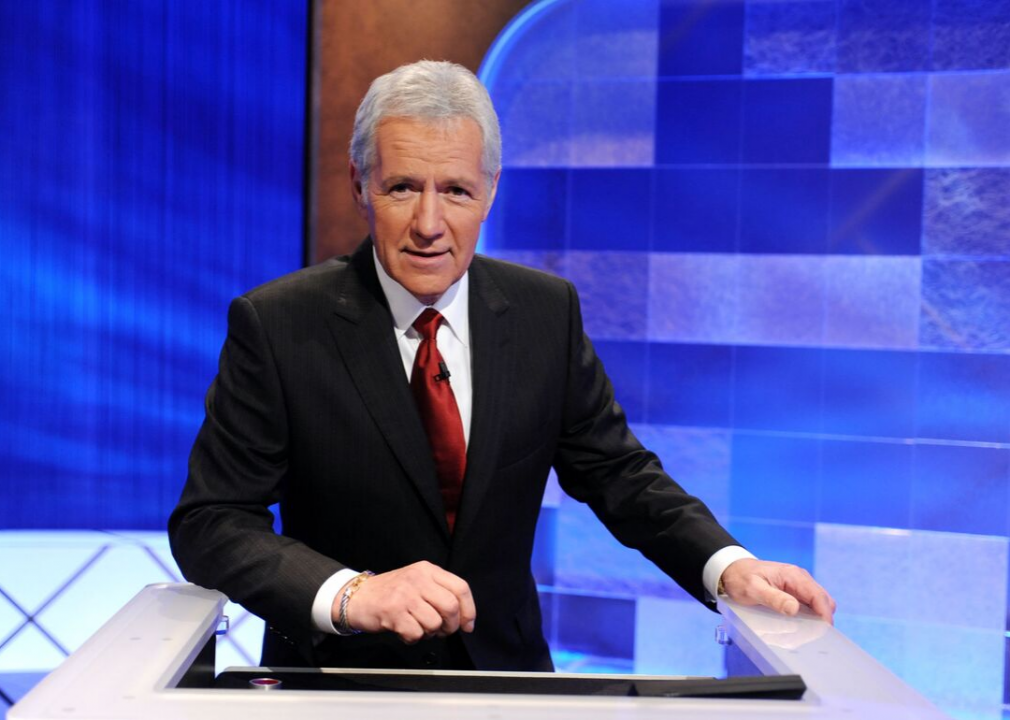
Amanda Edwards // Getty Image
Clue #22
- Clue: Despite being 10 times the size of the Earth, this sixth planet from the sun would actually float in water.
- Category: I NEED MY SPACE
- Value: $1,200
- Date episode aired: July 1, 2003
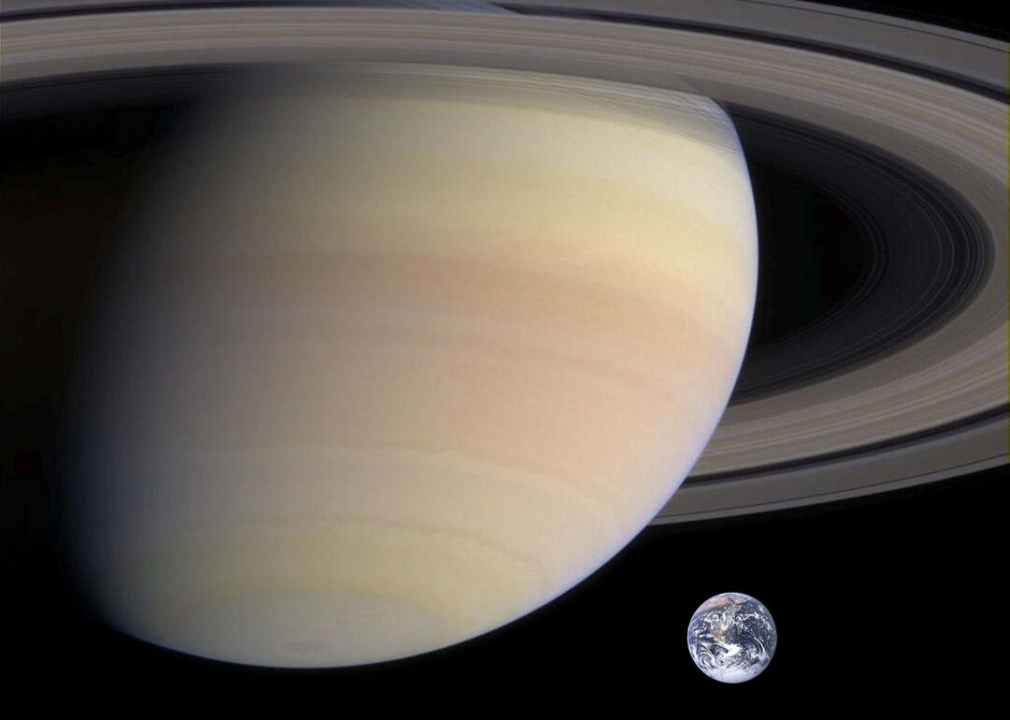
NASA // Wikimedia Commons
Answer #22: What is Saturn?
Named after the Roman god of wealth and agriculture, Saturn can be easily identified from its distinctive ring system. Its rings are mostly made up of ice, dust, and debris. As the planet itself is mostly made up of gas, it is less dense and lighter than water, and therefore could float in water—should there be a large enough container to fit it in.
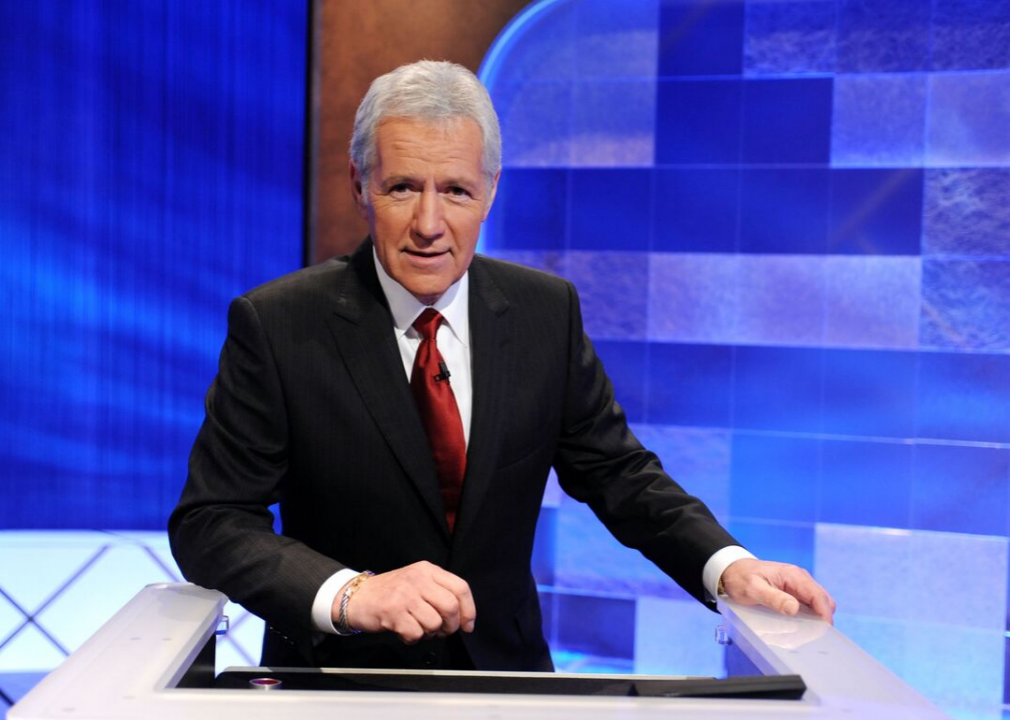
Amanda Edwards // Getty Image
Clue #23
- Clue: In March 1986, five spacecraft made fly-bys of this comet.
- Category: SPACE EXPLORATION
- Value: $200
- Date episode aired: Nov. 27, 2000
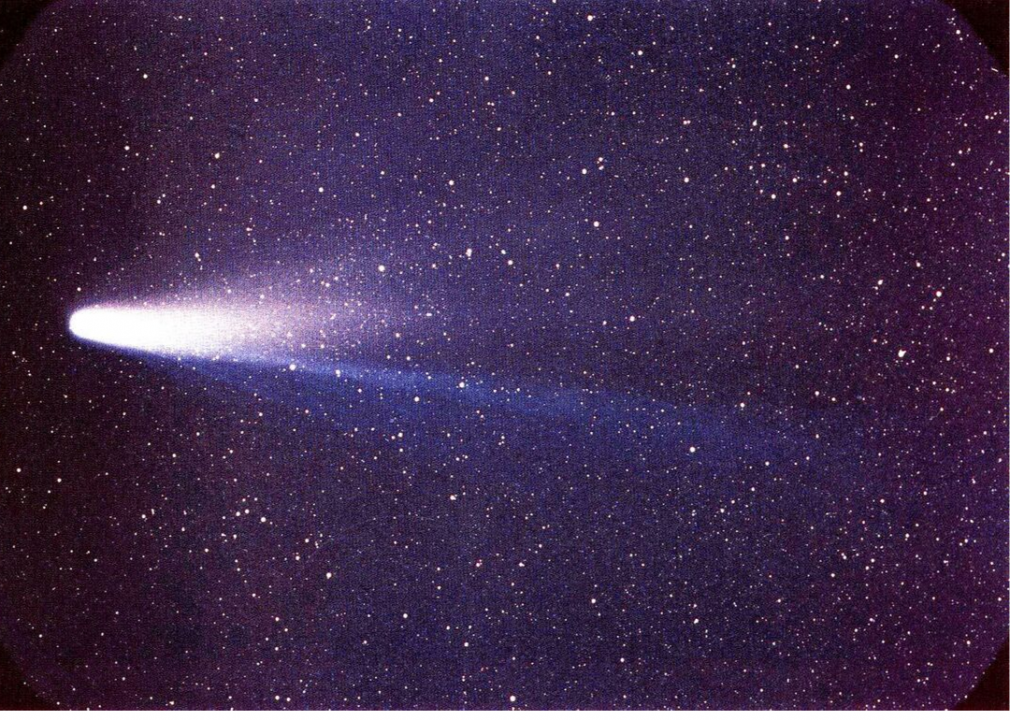
NASA/W. Liller // Wikimedia Commons
Answer #23: What is Halley's Comet?
Named after English astronomer Edmond Halley, Halley’s Comet was the first to be realized and recognized as a periodical comet. It is visible to Earth roughly every 75 or 76 years, roughly once or twice in a lifetime. Author Mark Twain wrote about how his birth was near a passing of Halley’s Comet and accurately predicted that the comet would pass yet again near his death.
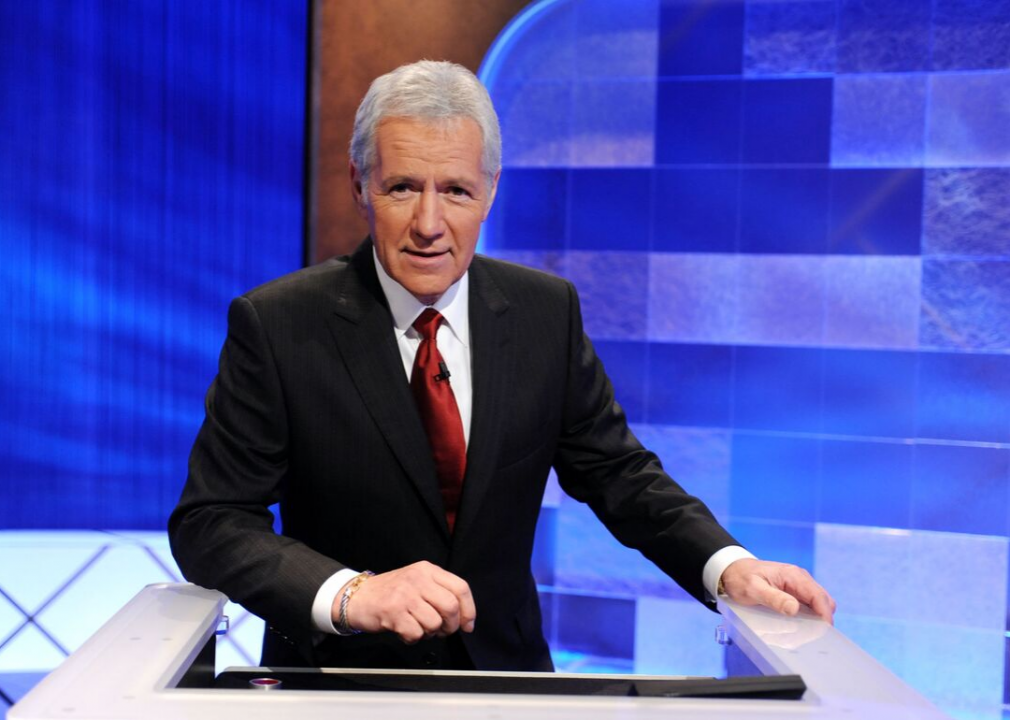
Amanda Edwards // Getty Image
Clue #24
- Clue: NASA's Neutral Buoyancy Lab puts astronauts in a simulation of this condition that's experienced during space flight.
- Category: A MATTER OF SOME GRAVITY
- Value: $400
- Date episode aired: Dec. 22, 2011
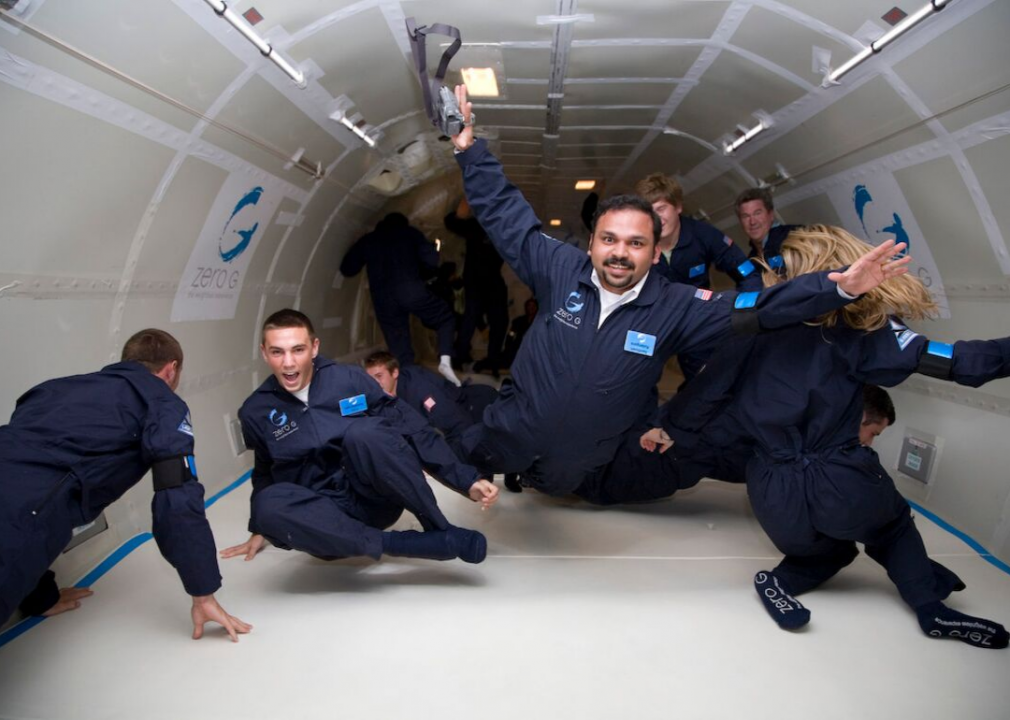
Santhosh George Kulangara // Wikimedia Commons
Answer #24: What is zero gravity?
Weightlessness, or zero gravity or “zero-G,” is the phenomenon where the sensation of weight is absent. When a gravitational field is zero or near zero, as it is in most of known space, those off-Earth will essentially float. The Neutral Buoyancy Laboratory near the Johnson Space Center features a large pool of water meant to simulate the effects of zero gravity.
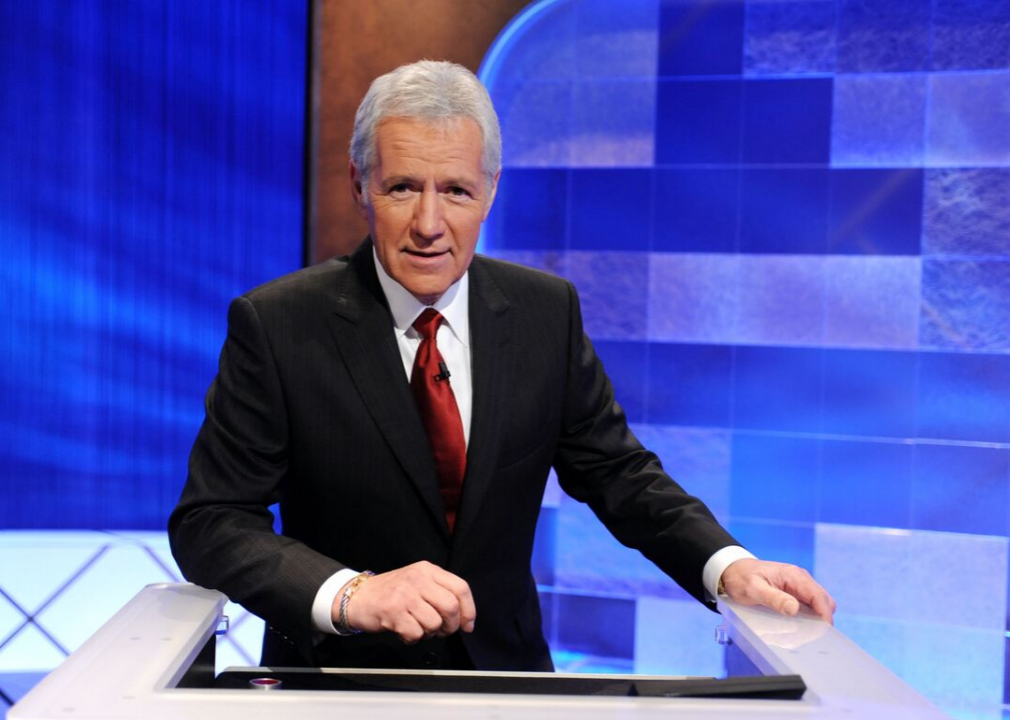
Amanda Edwards // Getty Image
Clue #25
- Clue: [There's a theme here] A Ranger spacecraft shot 300 close-up photos per minute to help select moon landing sites for this NASA program.
- Category: OTHER POWER RANGERS
- Value: $600
- Date episode aired: June 11, 2007
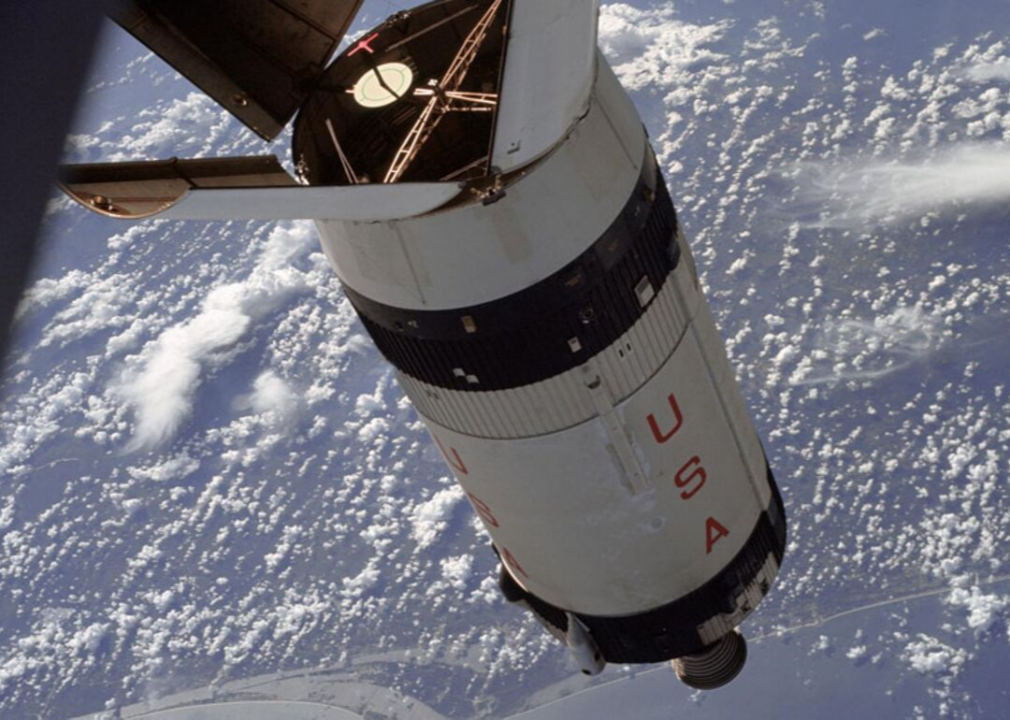
NASA
Answer #25: What is Apollo?
The third United States spaceflight program was named Apollo and succeeded in putting the first human beings ever onto the moon’s surface. The program comprised multiple manned spaceflights, the first crewed flight taking place in 1968 and the final happening in 1972.
